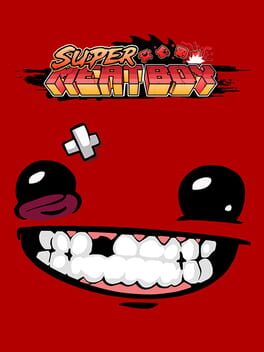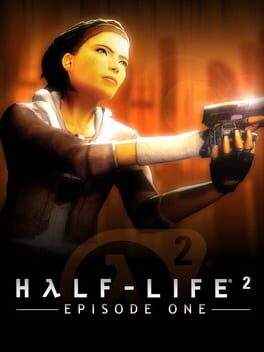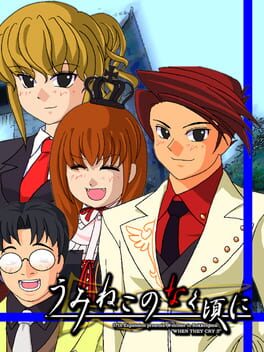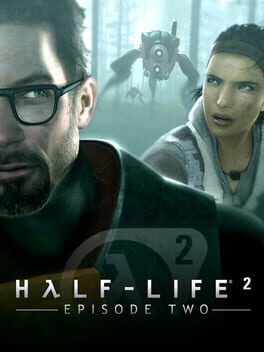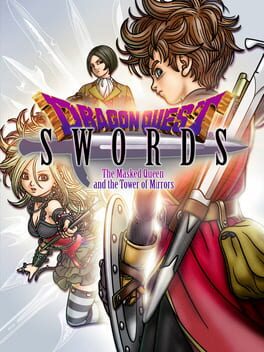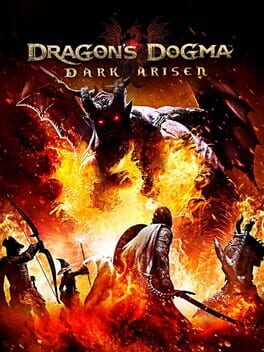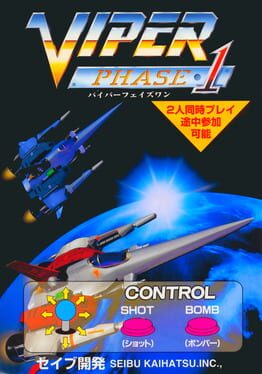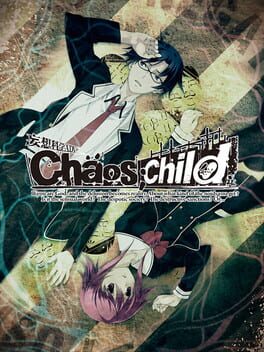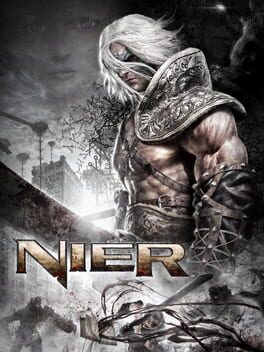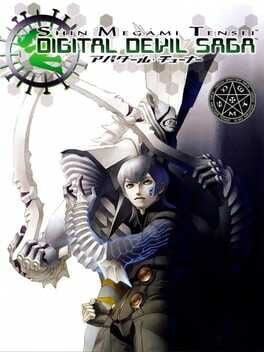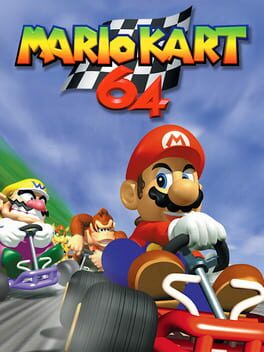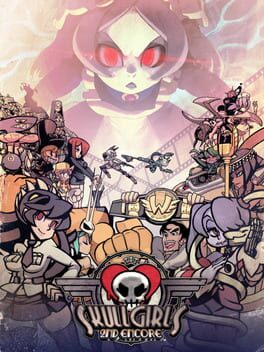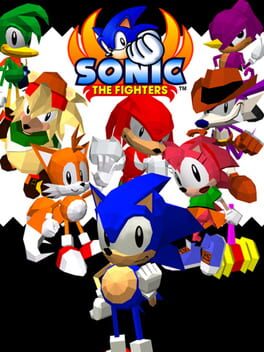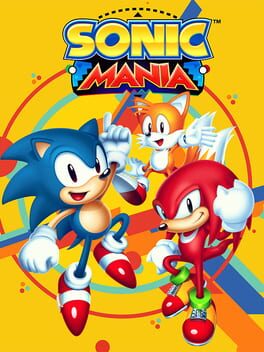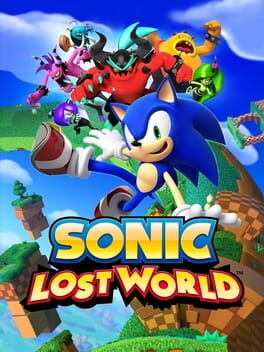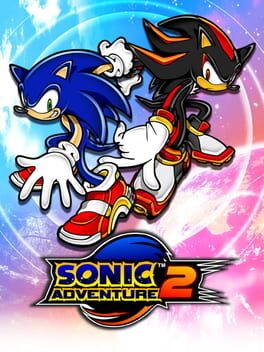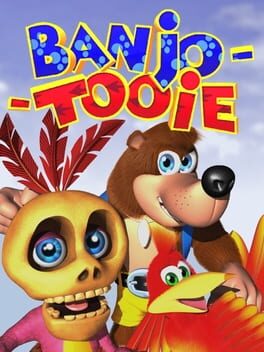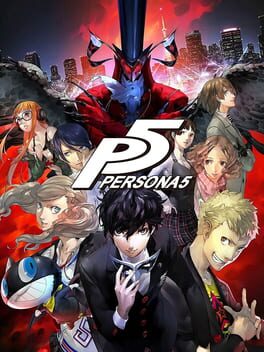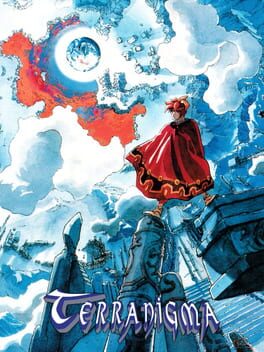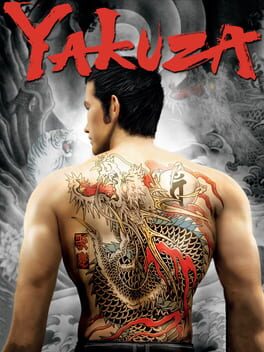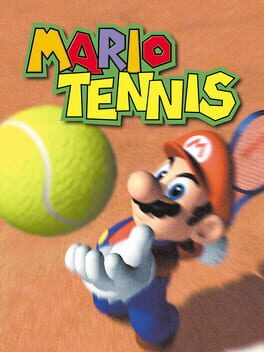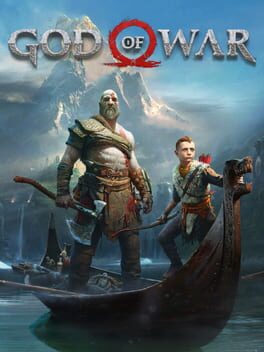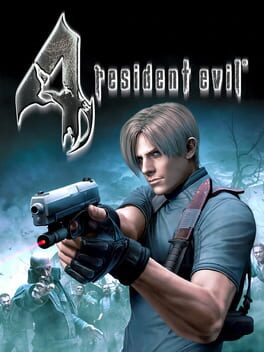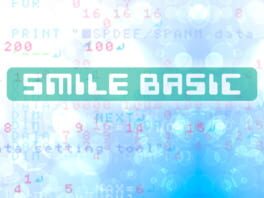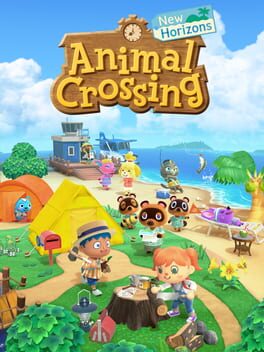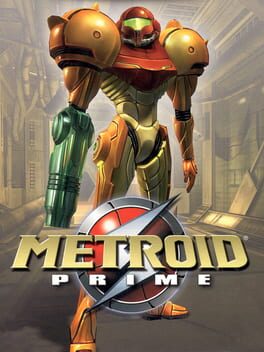QuentTheSlayer
1719 reviews liked by QuentTheSlayer
Super Meat Boy
2010
Banjo-Kazooie
1998
The first game I’ve ever played in my life was Super Mario 64. As a kid not really aware of the significance of this title for many years to come, a lot still stuck with me like Mario’s seamless movement in 3D and the possibilities it hosted interacting with the worlds and environment in both intended and unintended means. The worlds, in particular the initial set on the first level of Peach’s castle, felt so lively and overwhelming at first in the possibilities that existed and what could be found or missed even after seemingly scoping out the entire world. Hearing the keys of Jolly Roger Bay now almost twenty years removed still shoots a pang in my heart thinking back to my 5 year old self trying to catch all the red coins, get the power star early in the jet stream or plunder the secrets of the grimy underwater cavern. It’s easy nowadays to look back at 64 and the more questionable parts like hit or miss levels of the game, constant interruption in getting the stars, and the god awful camera, but the sense of amazement and charm around each corner and crevice of the experience rode high so hard then for me and I’m actually playing it. A bygone era so deeply intertwined with my childhood nostalgia that shaped and informed how I approach this medium even today.
Banjo Kazooie unfortunately was not part of my childhood like many people have experienced and I arrived real late on this duo’s whole thing until sometime around 2008 where I saw a commercial of nuts and bolts and its box art and being transfixed by their designs, Banjo in particular. Still, I never got around to the first game for many years to come until I stumbled upon a copy of it and its sequel randomly in my local used games store. It’s hard recalling many specific things I felt regarding the game then since it’s more than ten years removed at this point and I only progressed about as far as Clanker’s Cavern, but I wasn’t as in love with it like the acclaim it attracted but it was still a pretty captivating and colorful time. Though now I can say I 100%’d the entire game and find it to be more enjoyable than I thought before, not in a masterpiece way but still so invigorating to experience fully.
For as welcoming as this game oozes with the very cutesy and theatre kid like intro, I was caught off guard initially with how strict the movement is and levels later on tend to get later on. Banjo and Kazooie’s starting moveset is limited but opens up with each passing level to be a very unique tool kit of methodical traversal and basic enemy smashing. It doesn’t compare to the level of momentum and speed that can be generated and exploited from Mario and Sonic’s 3D outings at the time, but it still strikes a strong and enthralling identity with levels tuned and tailor-made around it with satisfying puzzles that incorporate their skills like the numerous egg-related puzzles, target puzzles with the beak bomb ability, and basic platforming and scaling done with the feathery flap, flap flip, talon trot and other abilities, even a toggle invulnerability skill. The levels are crafted very much around verticality while offering a lot to distinguish them from one another in their environments, characters and enemies, avoiding the issue of heavy reuse or too abstract territory in their level design. They are scaled near perfectly to prevent tedium from kicking in next to just how appealing it is to collect the various number of trinkets littered around the zones. I appreciate Rare’s approach to the collectibles by having both good variety and theming with the Jinjos, music notes, Jiggies, Mumbo tokens, honeycombs and other items that make collecting them appetizing outside of an overarching achievement. Music note collecting can become painful in some of the later levels with losing all your progress if you end up dying but this only became an annoyance in the later few levels that pushed the difficulty up slightly from its usual coasting fare.
The starting area of the tutorialized Spiral Mountain to Mumbo's Mountain and Treasure Trove Cove as the first two levels ease in how the game will go before truly adding some escalation with the levels onwards starting with Clanker’s Cavern. I recall my first experience of this place being a particular stinker that stopped me in my tracks because of how unwieldy I found swimming to be compared to Mario 64’s more in control feel, especially in stopping and changing direction. Playing Clanker again I didn’t find it to be much frustrating outside of turning and angling Banjo while swimming but alternating between the kicking and wing stroke (and apparently using the right bumper for sharp turns) alleviated some of the unwieldy feel. For as bad of a rap I feel this level gets, it was surprisingly fair and dare I say fun to go through and see this rise in challenge that would continue for most of the rest of the levels. Bubblegloop is a bit less exciting exploration wise and the gator mini game being too high energy until I unlocked the running shoes, but it was still interesting to see where it went and collecting the jiggies was a fun breeze. Freezeezy peak similarly felt more pulled in with the main peak of the tall snow man being the most interesting of the stage though falling on the short side; it did introduce the aerial beak bomb skill though it feels that it is missing a very needed reticle or some soft lock on as aiming is a bit too guesswork next to turning and recovering while flying being funky with the camera. Gobi’s desert ups the escalation with more treacherous terrain and an array of major and mini puzzles available such as the pyramids and the various ways of opening them and excavating the secrets within.
Mad Monster Mansion is possibly the peak of the levels for me with how many pathways and areas are layered across the map, even the Mansion alone, that I ended up missing a few things when I first exited the level. Rusty Bucket Bay and Click Clack Wood are the ultimate tests of the experience; the former being very strict on platforming and traversal outside with the trap of oily water draining available air below and above the surface fast and inside the ship with the engine room as the most unruly part of the game, somewhat to a frustrating degree with how sensitive Banjo’s movement feels at least playing on switch when walking across smaller and narrower platforms and connecting pathways. It’s a miracle having the suspend points as I feel I wouldn’t have completed this level fully with how many times I’ve dived off the deep end from making one wrong step or overextending a leap in the engine room. Click Clack Wood is much less difficult but unfortunately falls on the tedious side with an ambitious four season structure encompassing the same level of scaling a big tree and its surrounding puzzles for all the collectables. Collecting everything in Rusty was painful but Click Clack Wood felt more exhausting even halfway through going through the mostly same menial tasks, though a few had diverging set ups that changed across the seasons to fully get the jiggies associated with them. It never reached the levels of a Rainbow Ride, Tick Tock Clock or any other of Mario 64’s less stellar levels, but it did feel more intriguing as a concept versus the execution this time around. Overall, this set of worlds are excellent across the board and do their job well in emphasizing and incentivizing exploring the zones even when collecting the 100 music notes without dying felt sometimes eye rolling with some aspects of bullshit ending my runs roughly.
I don’t have extensive comments on the music outside of it fitting very well the gorgeous and charming presentation of Banjo-Kazooie’s worlds and layout. Sound design similarly is charismatic as each character and enemy feel vividly themselves in what they sound like, even if a few bordered on annoying or eye rolling at times. I will say I have a soft spot for the power up jingle played when using the temporary power ups and the different versions played depending on which is being used. The final boss theme goes hard for a delightfully tense final encounter with Gruntilda that incorporates a good variety of the skills gained across the journey. Sure aiming the eggs and beak bombing Grunty in the air was a bit frustrating with the camera but seeing the Mighty Jinjonator bash the shit out of Grunty in the end after all the effort is such a satisfying finish that I can almost overlook the annoyance.
It’s hard to pick up anything significant I didn’t like from my experience outside of the awkward camera but that’s more a staple of the era than anything completely unique to Banjo Kazooie. This game has aged very well for how long ago it came out, especially as a Nintendo 64 title. The thought of collecting everything in Super Mario 64 is a headache with how finicky the levels and platforming can get but Banjo Kazooie was a fun ride through and through outside of some hiccups on the way.
After engaging with very long and intensive games recently, I’ve had a craving for something smaller and more focused and Banjo-Kazooie definitely fit that bill. In many ways it was pretty refreshing to revisit this more bite sized adventure after clocking in so much time with more recent, bigger and sometimes exhaustive AAA titles that are fun in their own right but have started to have some diminishing returns the more I spent with them. Nostalgia rearing around again but a part of me does yearn for this era where the scale of games even at the top weren’t too alarming yet and what’s next not too far or too cautious with the threat of studio closure or acquisition to drain their bodies; the outright tease of Banjo-Tooie in the end credits and delivery of the extra in-game secrets after getting all the collectibles is real cocky but feels so human and sweet over a little bling of an achievement saying I completed everything in the game or the usual credit roll at the end of titles. I can admit this is a bit of a too nihilistic view at times given that so much good shit is still coming out today and even in the 90s and early aughts game development and various wings of it weren’t exactly rosy, especially many things Sega like that blue hedgehog and his messy titles around the fifth generation and onwards. Even Rare couldn’t escape the more vicious parts of this industry then and exists as a shell compared to its status decades ago. Never change games industry.
Regardless, I’ve greatly enjoyed my time with Banjo-Kazooie. It’s satisfied and ignited my craving for 3D platformer collect-a-thons again that has been a bit quiet for some time with all the action and rpg titles I’ve given myself to. I’m curious how I’ll feel about Tooie now since I recall not having a fun time with it ten years back. It would be very convenient to jump into it if Nintendo’s shameless online service had it but I suppose it will be added at some point when they raise the price again, but it’s whatever and other means to play can’t be too much of a problem. Who knows, maybe I’ll power up Super Mario 64 now and actually complete all the power stars for once since I’m feeling early 3D platformers again (extreme doubt).
Banjo Kazooie unfortunately was not part of my childhood like many people have experienced and I arrived real late on this duo’s whole thing until sometime around 2008 where I saw a commercial of nuts and bolts and its box art and being transfixed by their designs, Banjo in particular. Still, I never got around to the first game for many years to come until I stumbled upon a copy of it and its sequel randomly in my local used games store. It’s hard recalling many specific things I felt regarding the game then since it’s more than ten years removed at this point and I only progressed about as far as Clanker’s Cavern, but I wasn’t as in love with it like the acclaim it attracted but it was still a pretty captivating and colorful time. Though now I can say I 100%’d the entire game and find it to be more enjoyable than I thought before, not in a masterpiece way but still so invigorating to experience fully.
For as welcoming as this game oozes with the very cutesy and theatre kid like intro, I was caught off guard initially with how strict the movement is and levels later on tend to get later on. Banjo and Kazooie’s starting moveset is limited but opens up with each passing level to be a very unique tool kit of methodical traversal and basic enemy smashing. It doesn’t compare to the level of momentum and speed that can be generated and exploited from Mario and Sonic’s 3D outings at the time, but it still strikes a strong and enthralling identity with levels tuned and tailor-made around it with satisfying puzzles that incorporate their skills like the numerous egg-related puzzles, target puzzles with the beak bomb ability, and basic platforming and scaling done with the feathery flap, flap flip, talon trot and other abilities, even a toggle invulnerability skill. The levels are crafted very much around verticality while offering a lot to distinguish them from one another in their environments, characters and enemies, avoiding the issue of heavy reuse or too abstract territory in their level design. They are scaled near perfectly to prevent tedium from kicking in next to just how appealing it is to collect the various number of trinkets littered around the zones. I appreciate Rare’s approach to the collectibles by having both good variety and theming with the Jinjos, music notes, Jiggies, Mumbo tokens, honeycombs and other items that make collecting them appetizing outside of an overarching achievement. Music note collecting can become painful in some of the later levels with losing all your progress if you end up dying but this only became an annoyance in the later few levels that pushed the difficulty up slightly from its usual coasting fare.
The starting area of the tutorialized Spiral Mountain to Mumbo's Mountain and Treasure Trove Cove as the first two levels ease in how the game will go before truly adding some escalation with the levels onwards starting with Clanker’s Cavern. I recall my first experience of this place being a particular stinker that stopped me in my tracks because of how unwieldy I found swimming to be compared to Mario 64’s more in control feel, especially in stopping and changing direction. Playing Clanker again I didn’t find it to be much frustrating outside of turning and angling Banjo while swimming but alternating between the kicking and wing stroke (and apparently using the right bumper for sharp turns) alleviated some of the unwieldy feel. For as bad of a rap I feel this level gets, it was surprisingly fair and dare I say fun to go through and see this rise in challenge that would continue for most of the rest of the levels. Bubblegloop is a bit less exciting exploration wise and the gator mini game being too high energy until I unlocked the running shoes, but it was still interesting to see where it went and collecting the jiggies was a fun breeze. Freezeezy peak similarly felt more pulled in with the main peak of the tall snow man being the most interesting of the stage though falling on the short side; it did introduce the aerial beak bomb skill though it feels that it is missing a very needed reticle or some soft lock on as aiming is a bit too guesswork next to turning and recovering while flying being funky with the camera. Gobi’s desert ups the escalation with more treacherous terrain and an array of major and mini puzzles available such as the pyramids and the various ways of opening them and excavating the secrets within.
Mad Monster Mansion is possibly the peak of the levels for me with how many pathways and areas are layered across the map, even the Mansion alone, that I ended up missing a few things when I first exited the level. Rusty Bucket Bay and Click Clack Wood are the ultimate tests of the experience; the former being very strict on platforming and traversal outside with the trap of oily water draining available air below and above the surface fast and inside the ship with the engine room as the most unruly part of the game, somewhat to a frustrating degree with how sensitive Banjo’s movement feels at least playing on switch when walking across smaller and narrower platforms and connecting pathways. It’s a miracle having the suspend points as I feel I wouldn’t have completed this level fully with how many times I’ve dived off the deep end from making one wrong step or overextending a leap in the engine room. Click Clack Wood is much less difficult but unfortunately falls on the tedious side with an ambitious four season structure encompassing the same level of scaling a big tree and its surrounding puzzles for all the collectables. Collecting everything in Rusty was painful but Click Clack Wood felt more exhausting even halfway through going through the mostly same menial tasks, though a few had diverging set ups that changed across the seasons to fully get the jiggies associated with them. It never reached the levels of a Rainbow Ride, Tick Tock Clock or any other of Mario 64’s less stellar levels, but it did feel more intriguing as a concept versus the execution this time around. Overall, this set of worlds are excellent across the board and do their job well in emphasizing and incentivizing exploring the zones even when collecting the 100 music notes without dying felt sometimes eye rolling with some aspects of bullshit ending my runs roughly.
I don’t have extensive comments on the music outside of it fitting very well the gorgeous and charming presentation of Banjo-Kazooie’s worlds and layout. Sound design similarly is charismatic as each character and enemy feel vividly themselves in what they sound like, even if a few bordered on annoying or eye rolling at times. I will say I have a soft spot for the power up jingle played when using the temporary power ups and the different versions played depending on which is being used. The final boss theme goes hard for a delightfully tense final encounter with Gruntilda that incorporates a good variety of the skills gained across the journey. Sure aiming the eggs and beak bombing Grunty in the air was a bit frustrating with the camera but seeing the Mighty Jinjonator bash the shit out of Grunty in the end after all the effort is such a satisfying finish that I can almost overlook the annoyance.
It’s hard to pick up anything significant I didn’t like from my experience outside of the awkward camera but that’s more a staple of the era than anything completely unique to Banjo Kazooie. This game has aged very well for how long ago it came out, especially as a Nintendo 64 title. The thought of collecting everything in Super Mario 64 is a headache with how finicky the levels and platforming can get but Banjo Kazooie was a fun ride through and through outside of some hiccups on the way.
After engaging with very long and intensive games recently, I’ve had a craving for something smaller and more focused and Banjo-Kazooie definitely fit that bill. In many ways it was pretty refreshing to revisit this more bite sized adventure after clocking in so much time with more recent, bigger and sometimes exhaustive AAA titles that are fun in their own right but have started to have some diminishing returns the more I spent with them. Nostalgia rearing around again but a part of me does yearn for this era where the scale of games even at the top weren’t too alarming yet and what’s next not too far or too cautious with the threat of studio closure or acquisition to drain their bodies; the outright tease of Banjo-Tooie in the end credits and delivery of the extra in-game secrets after getting all the collectibles is real cocky but feels so human and sweet over a little bling of an achievement saying I completed everything in the game or the usual credit roll at the end of titles. I can admit this is a bit of a too nihilistic view at times given that so much good shit is still coming out today and even in the 90s and early aughts game development and various wings of it weren’t exactly rosy, especially many things Sega like that blue hedgehog and his messy titles around the fifth generation and onwards. Even Rare couldn’t escape the more vicious parts of this industry then and exists as a shell compared to its status decades ago. Never change games industry.
Regardless, I’ve greatly enjoyed my time with Banjo-Kazooie. It’s satisfied and ignited my craving for 3D platformer collect-a-thons again that has been a bit quiet for some time with all the action and rpg titles I’ve given myself to. I’m curious how I’ll feel about Tooie now since I recall not having a fun time with it ten years back. It would be very convenient to jump into it if Nintendo’s shameless online service had it but I suppose it will be added at some point when they raise the price again, but it’s whatever and other means to play can’t be too much of a problem. Who knows, maybe I’ll power up Super Mario 64 now and actually complete all the power stars for once since I’m feeling early 3D platformers again (extreme doubt).
[Average Reading Time: 8 Minutes]
A mute, a drunken womanizer, a french fashionista, and a momma's boy are working together to take down a big bad guy. Surely they would work better together if the game worked at all!
I discovered my love for the Dragon Quest series of games a little over half a decade ago when I downloaded the mobile version of the first game on a whim. Since then, I've always been excited to see the future of the series, as well as the spin-offs released in the past. One spin-off that caught my attention was the Wii game, Dragon Quest Swords: The Masked Queen and the Tower of Mirrors. That's a mouthful, so from here on out, I'll simply refer to it as Dragon Quest Swords.
Dragon Queest Swords offers a very unique gameplay experience. It's what I would call a rail action RPG. Imagine a rail shooter. You're constantly moving forward until you have to stop to shoot at enemies. Now, replace shooting enemies with slashing a sword at monsters. On paper, it sounds interesting. Not many games opt for a melee focus when being on-rails. As interesting as it is though, we must ask an important question: Does it stick the landing?
Sadly, I can't say that it does. So, to attack, you must swing the Wii remote. Of course, it's not as simple as just swinging the remote. Moving the controller in specific directions executes slashes in specific directions. Swing vertically for a vertical slice, horizontally for a horizontal slice, you get the idea. You also have a stab move, which requires you to thrust the controller towards the screen. This all sounds simple, but you must also remember that this was a Wii game that released in 2007, which means it's less than accurate, to say the least. Sometimes you'll swing the sword and wind up stabbing. Sometimes you'll stab and wind up swinging. This gets highly annoying, especially as you begin to encounter monsters that are more effectively taken down by specific moves.
Along with slashing, you are also able to focus your strikes on a specific area of the screen by moving the cursor to a specific spot and hitting A. This helps with targeting, allowing you to have vertical and horizontal slices go through areas that they normally wouldn't and allowing for stabs to hit a specific spot when the input feels like being read by the game.
This also helps with targeting specific enemy attacks that can be reflected with a sword strike. Many enemies will shoot projectiles that you can either only block with your shield, can either block or deflect with a sword strike, or reflect back at a foe with a sword strike. This all depends on the color of the move as the prompts appear to you before they make contact. At first, it's as simple as seeing the telegraph, highlighting the area the move is going to land and hitting A, and then swinging the sword when the timing is right to send it back. As the game goes on, though, you'll begin encountering scenarios where you're on the receiving end of multiple of these moves rapidly, requiring you to react accordingly quickly. Many times I've been hit with multiple deflectable moves because I was only able to deflect one and didn't have enough time to set up for another deflection.
You'll also have times where the deflection zones line up with where a slash would go without doing the A button setup, and other times where you're getting hit by multiple deflecting moves at once in a line and now you need to hope that when you do the specific sword strike the game is asking for, it registers properly. Input delay is very real with this game, as well, which does not help with these moves that require specific timing.
Thankfully, this isn't all the game offers in terms of combat gameplay. At any time, you can open your inventory to use a healing item, or have your party member (when you get one) use an attacking, restorative, or buffing spell to even the odds. You also have access to "Master Strokes", which are your special moves that deal big damage to all enemies on screen. By hitting foes, you build up a meter that allows you to execute these moves. Fill it up and you can activate these at any time during combat. Of course, in order to do the move you need to move the Wii remote in whatever directions they ask for. Fail to do so properly, and you'll either do less damage with the move or the move will fail to execute!
Despite my problems with the combat, when you're fighting anywhere between 1-3 enemies at a time, it's manageable. Not good, but manageable. It's when you're in scenarios where there's 4+ enemies on screen and you're slashing away at one while the other's readying an attack and now you have to get your shield up and oh no, the enemy you were wailing on moved away from you and now another enemy is healing them and whichever enemy you're now focusing on while any other enemy on the screen can do something to ruin your life...
...is where the game truly falls apart.
It truly is a shame that the combat wound up like this. The Wii was home to a plethora of motion based games, and as I played this game, I began to understand more and more why casual games for the console required less-specific motions with the controller. Motion controls simply weren't at the proper point for a game like this. In an era where VR has lead to an era where motion controls in games are more reliable than ever, leading me to want to experience them more, I can only say that Dragon Quest Swords was ahead of its time. Had it released in this generation as a VR title, I feel that it wouldn't have suffered from these problems. At the very least, I would be able to stab at an enemy and actually pull it off on the first try.
So, outside of the combat, we also have a town to explore. Here you can buy items to restore health, as well as equipment to raise your stats. You can also temper your sword, making it more powerful and allowing you access to more Master Strokes. It's also here where the bulk of the plot happens, which is very basic, for the most part. There are twists here and there and there are stakes, but it never really feels too compelling, sadly.
What is fun here are the character designs and the voice acting. I'll start with the voice acting first. The cast is pretty well-directed, and the actors pull off their lines very well. Hearing people speak to me in this world was one of the highlights, since there are some fun writing bits here and there.
Since this is a Dragon Quest game, we have Akira Toriyama (RIP) doing the designs for the cast. The enemies are wonderful looking, as always. The main party also hosts a number of interesting designs. One of my favorites has to be Claymore, who's the protagonist's father. As you explore the town and fight baddies, you see a number of familiar designs all getting the 3D model treatment, and they all translate really well! It's because of this that I find Fleurette's design to be funny in comparison since she clashes so much with the world around her. It's a great design, don't get me wrong, but she looks like she walked into the wrong game and just kinda hung out there!
As much as I enjoy the characters and world here, it does not save the gameplay. Through some effort, you can get far and beat it, but I found myself stopping right at the final boss. Without spoiling ANYTHING SPECIFIC, here's why. So, the final boss has a special move they can pull off, and when they do you are prompted to slash repeatedly at the screen to reduce damage as much as possible. Despite almost filling the meter keeping track of my strokes on the side of the screen completely, I was one-hit killed by the move! This never happened at any earlier point in the game. This also happened after a long session with intent of beating the game, which did not add to my mood that night.
Despite being a spin-off, it still has that Dragon Quest blood and wants you to grind! Want cash for better armor or levels to keep your stats beefy? Better go spend a non-specific amount of time grinding for it! Before facing the final boss, I never even considered grinding. The difficulty curve was adjusting properly as I played, so I felt no need to ever go back and boost my stats before any stage. Now, right at the end, the game is telling me to go back and do all that? If this were a normal RPG, I would've. However, grinding in Dragon Quest Swords means any additional amount of time flailing your arm around to boost stats. Just thinking about returning to old areas to spend hours swinging that sword around strictly for levels and cash sounds exhausting, physically exhausting. No thanks.
Overall, I can't in good faith recommend anyone play this game. The world is pretty and the characters are fun, but the story is unengaging and the gameplay is dreadful. If this game were to get a remake for VR headsets that took advantage of the developments that have occurred over the 17 years since its initial release, though, I'd happily give it another shot. As it is now, though, I can't implore you enough to STAY AWAY!
One last thing I want to note before I end this review. I want to talk a little more about Claymore. His backstory is that he fought the evil demon five years ago and lost the ability to use his arm to fight as a result. The more I looked at him and thought about him, the more I began to realize that his story is similar to that of Dunban from Xenoblade Chronicles, who also lost the ability to fight with his dominant arm in combat. Then, I began to notice that his voice sounded similar to Dunban's, and I thought to myself "Did they really get this guy to do Dunban's voice for that game? That would be very funny." I then make my way to the MobyGames page for the voice actor, Wayne Forester. As I scrolled though his roles, I did find that he offered his talents for Xenoblade Chronicles. However, it wasn't for Dunban. It was for someone else. It was for... HIM!
A mute, a drunken womanizer, a french fashionista, and a momma's boy are working together to take down a big bad guy. Surely they would work better together if the game worked at all!
I discovered my love for the Dragon Quest series of games a little over half a decade ago when I downloaded the mobile version of the first game on a whim. Since then, I've always been excited to see the future of the series, as well as the spin-offs released in the past. One spin-off that caught my attention was the Wii game, Dragon Quest Swords: The Masked Queen and the Tower of Mirrors. That's a mouthful, so from here on out, I'll simply refer to it as Dragon Quest Swords.
Dragon Queest Swords offers a very unique gameplay experience. It's what I would call a rail action RPG. Imagine a rail shooter. You're constantly moving forward until you have to stop to shoot at enemies. Now, replace shooting enemies with slashing a sword at monsters. On paper, it sounds interesting. Not many games opt for a melee focus when being on-rails. As interesting as it is though, we must ask an important question: Does it stick the landing?
Sadly, I can't say that it does. So, to attack, you must swing the Wii remote. Of course, it's not as simple as just swinging the remote. Moving the controller in specific directions executes slashes in specific directions. Swing vertically for a vertical slice, horizontally for a horizontal slice, you get the idea. You also have a stab move, which requires you to thrust the controller towards the screen. This all sounds simple, but you must also remember that this was a Wii game that released in 2007, which means it's less than accurate, to say the least. Sometimes you'll swing the sword and wind up stabbing. Sometimes you'll stab and wind up swinging. This gets highly annoying, especially as you begin to encounter monsters that are more effectively taken down by specific moves.
Along with slashing, you are also able to focus your strikes on a specific area of the screen by moving the cursor to a specific spot and hitting A. This helps with targeting, allowing you to have vertical and horizontal slices go through areas that they normally wouldn't and allowing for stabs to hit a specific spot when the input feels like being read by the game.
This also helps with targeting specific enemy attacks that can be reflected with a sword strike. Many enemies will shoot projectiles that you can either only block with your shield, can either block or deflect with a sword strike, or reflect back at a foe with a sword strike. This all depends on the color of the move as the prompts appear to you before they make contact. At first, it's as simple as seeing the telegraph, highlighting the area the move is going to land and hitting A, and then swinging the sword when the timing is right to send it back. As the game goes on, though, you'll begin encountering scenarios where you're on the receiving end of multiple of these moves rapidly, requiring you to react accordingly quickly. Many times I've been hit with multiple deflectable moves because I was only able to deflect one and didn't have enough time to set up for another deflection.
You'll also have times where the deflection zones line up with where a slash would go without doing the A button setup, and other times where you're getting hit by multiple deflecting moves at once in a line and now you need to hope that when you do the specific sword strike the game is asking for, it registers properly. Input delay is very real with this game, as well, which does not help with these moves that require specific timing.
Thankfully, this isn't all the game offers in terms of combat gameplay. At any time, you can open your inventory to use a healing item, or have your party member (when you get one) use an attacking, restorative, or buffing spell to even the odds. You also have access to "Master Strokes", which are your special moves that deal big damage to all enemies on screen. By hitting foes, you build up a meter that allows you to execute these moves. Fill it up and you can activate these at any time during combat. Of course, in order to do the move you need to move the Wii remote in whatever directions they ask for. Fail to do so properly, and you'll either do less damage with the move or the move will fail to execute!
Despite my problems with the combat, when you're fighting anywhere between 1-3 enemies at a time, it's manageable. Not good, but manageable. It's when you're in scenarios where there's 4+ enemies on screen and you're slashing away at one while the other's readying an attack and now you have to get your shield up and oh no, the enemy you were wailing on moved away from you and now another enemy is healing them and whichever enemy you're now focusing on while any other enemy on the screen can do something to ruin your life...
...is where the game truly falls apart.
It truly is a shame that the combat wound up like this. The Wii was home to a plethora of motion based games, and as I played this game, I began to understand more and more why casual games for the console required less-specific motions with the controller. Motion controls simply weren't at the proper point for a game like this. In an era where VR has lead to an era where motion controls in games are more reliable than ever, leading me to want to experience them more, I can only say that Dragon Quest Swords was ahead of its time. Had it released in this generation as a VR title, I feel that it wouldn't have suffered from these problems. At the very least, I would be able to stab at an enemy and actually pull it off on the first try.
So, outside of the combat, we also have a town to explore. Here you can buy items to restore health, as well as equipment to raise your stats. You can also temper your sword, making it more powerful and allowing you access to more Master Strokes. It's also here where the bulk of the plot happens, which is very basic, for the most part. There are twists here and there and there are stakes, but it never really feels too compelling, sadly.
What is fun here are the character designs and the voice acting. I'll start with the voice acting first. The cast is pretty well-directed, and the actors pull off their lines very well. Hearing people speak to me in this world was one of the highlights, since there are some fun writing bits here and there.
Since this is a Dragon Quest game, we have Akira Toriyama (RIP) doing the designs for the cast. The enemies are wonderful looking, as always. The main party also hosts a number of interesting designs. One of my favorites has to be Claymore, who's the protagonist's father. As you explore the town and fight baddies, you see a number of familiar designs all getting the 3D model treatment, and they all translate really well! It's because of this that I find Fleurette's design to be funny in comparison since she clashes so much with the world around her. It's a great design, don't get me wrong, but she looks like she walked into the wrong game and just kinda hung out there!
As much as I enjoy the characters and world here, it does not save the gameplay. Through some effort, you can get far and beat it, but I found myself stopping right at the final boss. Without spoiling ANYTHING SPECIFIC, here's why. So, the final boss has a special move they can pull off, and when they do you are prompted to slash repeatedly at the screen to reduce damage as much as possible. Despite almost filling the meter keeping track of my strokes on the side of the screen completely, I was one-hit killed by the move! This never happened at any earlier point in the game. This also happened after a long session with intent of beating the game, which did not add to my mood that night.
Despite being a spin-off, it still has that Dragon Quest blood and wants you to grind! Want cash for better armor or levels to keep your stats beefy? Better go spend a non-specific amount of time grinding for it! Before facing the final boss, I never even considered grinding. The difficulty curve was adjusting properly as I played, so I felt no need to ever go back and boost my stats before any stage. Now, right at the end, the game is telling me to go back and do all that? If this were a normal RPG, I would've. However, grinding in Dragon Quest Swords means any additional amount of time flailing your arm around to boost stats. Just thinking about returning to old areas to spend hours swinging that sword around strictly for levels and cash sounds exhausting, physically exhausting. No thanks.
Overall, I can't in good faith recommend anyone play this game. The world is pretty and the characters are fun, but the story is unengaging and the gameplay is dreadful. If this game were to get a remake for VR headsets that took advantage of the developments that have occurred over the 17 years since its initial release, though, I'd happily give it another shot. As it is now, though, I can't implore you enough to STAY AWAY!
One last thing I want to note before I end this review. I want to talk a little more about Claymore. His backstory is that he fought the evil demon five years ago and lost the ability to use his arm to fight as a result. The more I looked at him and thought about him, the more I began to realize that his story is similar to that of Dunban from Xenoblade Chronicles, who also lost the ability to fight with his dominant arm in combat. Then, I began to notice that his voice sounded similar to Dunban's, and I thought to myself "Did they really get this guy to do Dunban's voice for that game? That would be very funny." I then make my way to the MobyGames page for the voice actor, Wayne Forester. As I scrolled though his roles, I did find that he offered his talents for Xenoblade Chronicles. However, it wasn't for Dunban. It was for someone else. It was for... HIM!
Alan Wake Remastered
2021
A game that's focused on being the light in the darkness is one that has very bright moments of brilliance among a pile of flaws. Okay, I needed to let that weird and probably inaccurate metaphor out of my brain. Let's actually break this down.
I got into Alan Wake by recommendation of my brother and any fan of Remedy's games I could find on the internet. So I decided to finally give it a shot! After FFVII Rebirth I wanted to play some shorter games to wind down from such a massive RPG.
Now, after playing it, my usual reaction to anyone who told me to try it out is a mix of “Why? Why would you make me do this?” and “I genuinely understand the vision, and I share it as well".
And that is born from the fact that playing the actual videogame is not very fun. And while I found the idea of having to break enemies' guards with a flashlight first before being able to damage them (not counting flare gun shots and flashbangs) very cool at first, I feel like as the game goes by, the concept starts becoming very repetitive as most enemy encounters feel the same. It quickly starts to become very, very annoying. Specially when you have the entire army of darkness throwing homing axes and machetes at you that you usually have to avoid by using the most unreliable dodge button ever put in an action game.
However, every time I would get into a section of the game where I could just watch the story unravel, read a manuscript, listen to a radio show, or watch the characters interact, it was delightful. It's a bizarre story that's surprisingly funny (whether it's intentional or not) at times, with interesting ways of preparing its plot twists and making the player believe they are going just as insane as Alan himself is.
What I'm trying to say, is that 1. I don't think that Alan is as unlikeable as a lot of people led me to believe, while he gives an awful first impression. It takes having to interact with a friend that has a creative hobby, whether it is writing, animating, drawing, you name it, you quickly come to realize that being creatively blocked fucking sucks, and I can also speak from experience with that. And 2. Barry is absolutely GOATED, I wish I had half of his charisma.
At the end of the day, even if I had my complaints with the gameplay itself, I found myself in more situations where I would go, “Oh, this is why people love these games,” and I want to see more of it. Soon I'll go into the DLCs, and maybe later this year, both Control and the direct sequel because I HAVE to know more.
I got into Alan Wake by recommendation of my brother and any fan of Remedy's games I could find on the internet. So I decided to finally give it a shot! After FFVII Rebirth I wanted to play some shorter games to wind down from such a massive RPG.
Now, after playing it, my usual reaction to anyone who told me to try it out is a mix of “Why? Why would you make me do this?” and “I genuinely understand the vision, and I share it as well".
And that is born from the fact that playing the actual videogame is not very fun. And while I found the idea of having to break enemies' guards with a flashlight first before being able to damage them (not counting flare gun shots and flashbangs) very cool at first, I feel like as the game goes by, the concept starts becoming very repetitive as most enemy encounters feel the same. It quickly starts to become very, very annoying. Specially when you have the entire army of darkness throwing homing axes and machetes at you that you usually have to avoid by using the most unreliable dodge button ever put in an action game.
However, every time I would get into a section of the game where I could just watch the story unravel, read a manuscript, listen to a radio show, or watch the characters interact, it was delightful. It's a bizarre story that's surprisingly funny (whether it's intentional or not) at times, with interesting ways of preparing its plot twists and making the player believe they are going just as insane as Alan himself is.
What I'm trying to say, is that 1. I don't think that Alan is as unlikeable as a lot of people led me to believe, while he gives an awful first impression. It takes having to interact with a friend that has a creative hobby, whether it is writing, animating, drawing, you name it, you quickly come to realize that being creatively blocked fucking sucks, and I can also speak from experience with that. And 2. Barry is absolutely GOATED, I wish I had half of his charisma.
At the end of the day, even if I had my complaints with the gameplay itself, I found myself in more situations where I would go, “Oh, this is why people love these games,” and I want to see more of it. Soon I'll go into the DLCs, and maybe later this year, both Control and the direct sequel because I HAVE to know more.
In a 2013 GDC talk on the development of Dragon’s Dogma. The director Hideaki Itsuno wanted specific principles: “high degree of freedom, simple action, highly realistic.” With examples: Elder Scrolls Oblivion, Fallout 3, and Fable 2. Disclosing their units shipped and the same quality/s each possesses. These three aspects I'm quite fond of. With the first as numero uno what I look for. Freedom. Always. His “job was to convince internal members of Capcom that this is a challenge he wanted to take on. Similar games in this open world RPG genre didn't really exist in Japan. And they weren’t able to accurately forecast if the project would sell or the market potential.”
I couldn’t help but remember a comparable individual I look up to, Tetsuya Takahashi. The man behind the creation of the Xeno series along with his team and his wife Soraya Saga. In a 2015 Venturebeat interview he answered a question on what is the "biggest difference between Western and Japanese audiences, especially in terms of what they want from a role-playing game?” Takahashi said “What you’ll find quite often is that a lot of the markets outside of Japan are interested in games where you can do anything you want. They put a high priority on a great degree of freedom. In the Japanese market, it’s more common for people will demand a certain flow to the events in a game. We find that they’re more comfortable with a linear framework. We have our theories about why this might be.”
The comparison is relative due to the creators of their respective franchises aspiring to replicate near identical reception and appeal within their works. To differing results. Moving outside their comfort zone creating a fusion in a way. As much as I would revel in going off on Xenoblade Chronicles X, that’s a story for another time. Among the challenges and expectations, Itsuno is trying to match Skyrim’s massive reception with Dragon’s Dogma. An ambitious endeavor I appreciate as he remarks transparently in March 20, 2012. “At Capcom, we’ve made Dragon’s Dogma and come up to this point through our experience of action games. We’re trying to make a new genre: We’re using our action heritage and putting that into an action RPG.”
Emphasizing “changing action RPG to ACTION rpg.” Going for ambition is not inherently wrong. Great to have these goals to strive towards. As long as they stick the landing, journey and beginning. And I must say, after 3 playthroughs. One on normal, on hard mode, and finishing a speedrun whilst completing everything I can in postgame and the DLC on Bitterback isle of the Dark Arisen version, I firmly believe they succeeded in accomplishing all three qualities. However, despite my abundant enjoyment I did come across a sizable bulk of concerns I’ll discuss later in my mixed feelings. For now, I’ll discuss immediate sections I love.
Freedom is unrestricted. You can forget the main quest and go gallivanting off the beaten path and run towards any place on the map. Delving freely into dark dungeons, rocky caverns or forgotten ruins where a lantern is a must to combat the darkness. Filled with a plethora of variable attackers you won’t usually see copy-paste monsters on a budget. Harpies, undead skeletons, zombies, knights, mages, bandits, goblins, liches, ghosts, ogres, and etc. Even their variants are suitable. Clashing heavyweights against yours. Thus I can’t complain on the diverse enemy enriching every location you stumble in your wanderlust. Speaking of stumbling, you can upon completing a small bit of central plot early on set your fast travel points within reason. I didn’t like the approach since you receive a limited lot but ultimately came around to liking the unorthodox system. Helped by the fact the world didn’t feel too huge to traverse. Nor too meager to explore the sum of the whole caboodle within a short amount of time. Instead, the locales are filled with interesting locations. Multiple medium to large-scale dungeons displaying serviceable level design beyond linear corridors. Plenty of paths to tread both up and down. Breathtaking scenery during adventures. Bluemoon Tower made me feel as if I was transported in Rome’s Colosseum except fantasied. Ruined in decay where a single step can lead to certain death. Or embark on a long fog-filled forest where directions can prove futile for a newbie traveler. Yet for the experienced, hitting misty poles can unveil the true path. Mayhaps you will partake in a water temple? Which by the gods isn’t as arduous as other infamous water temples in games I’ve played. Link would breathe a sigh of relief here. Levers and switches to change the water level. Or for the speedy, they can excuse the routes and with careful jumping reach the end of the dungeon. Outside the danger is palpable with special zones where never-before-seen creatures lurk. Dangerous lichs and small drakes patrol. A functional day/night cycle capable of giving goosebumps if you decide to tackle the absence of sun with naught but your companions along. Hopefully, you brought ample oil flasks for your lantern. Cause oh boy does the night present dangerous adversaries not just in a greater supply of darker denizens but boss behemoths roaming the lands. Reminded me a bit of turning tail and running towards safety amid the nights in Dying Light. Seeing a chimera pop up near my location still gives me shivers…
Additionally changing vocations called classes and specializing in whatever playstyle you so choose is near-painless. Parallel to the weapon classes from Monster Hunter, but different. As you kill bounties of opponents and level up your vocation rank, unlock new skills and abilities. Allowed me to play as a mystic knight capable of dishing out spells while tanking with a shield and upon switching my staff in the menu. I return, bashing heads without remorse. Each class is satisfying with strengths and weaknesses. I honestly didn’t expect to fancy bow and arrows, and DD made me a fan of archery. What the heck man? I was a longtime Greatsword user.Heck, you can grab and climb any large creature during conflicts whenever. Hiroyuki Kobayashi, the producer said in an 2011 Siliconera interview. How DD’s grab mechanic in addition to “...the main character can go and do whatever he wants in this world, it gave birth to the idea that he’s fighting enemies and he should be able to fight them in any way that he wants and so we came up with the idea of the grabbing mechanic. He can climb on these enemies and fight them however he chooses.” A defining trait adding an essential option for players to tactfully embrace a closer savage quarrel against any terrifying freaks. Though the concept isn’t fresh, Shadow of the Colossus(SOTC) requires players to climb and weaken a colossus by striking their weak-spots. The influence I feel resonates still with characters conducting similar operations. If I am climbing a Cyclops then surely the eye is the weakness right?! Yes! Chimera for instance as an early boss functions in a comparable manner. Slay the snake tail, to make climbing safer. Hitting the goat head silences spells, then bashed the lion head to finish off the triple threat in a single body. Refreshing to play an open realm granting players simple mechanics and then shooing them off, if they decide not to embrace the major narrative at will.
For folks who don’t know the premise is simple and lightly intriguing. Within a small village called Cassardis you(after creating your protagonist) live a relatively normal life. Until one day. A BIG RED DRAGON starts scorching your fellow villagers on the nearby beach. Wreaking havoc. Heart pounding you decisively run out. Brandish a rusted sword and try to fight off the savage dragon. You can undoubtedly realize how such an encounter fared. Very poorly. We lose our life. But wait! We are alive? The dragon decides to steal our ‘heart’ literally. And some way, somehow we are alive as “Arisen” A human being whose destiny is tied to stopping the dragon. Welp, there goes my regular routine. I already had plans for. Although facing the dragon is the least of our concerns, immediately you are bombarded with new main and side quests to undertake at your leisure. And it is here where the realistic portion emerges.
Highly realistic is accurate. For better or worse, everything operates and contributes to the unique presentation. Resembling real life, a black market exists for counterfeiting necessities. Try saving key special quest items instead of returning them to the owner. Giving them a pale counterpart. The outcome may raise eyebrows. Moving on, all items have weight. Healing, tools and materials are not spared. Gathering materials takes time. Thankfully not too slow and not too fast. I mentioned the grab mechanic earlier, but just as you are provided the ability to climb onto giants, so too do they have the innate ability to pin you down in their grasp! Best to keep on the move Arisen! Lest you fall into their hands! Stamina(ST) is your lifeline. Every weapon ability used will deplete a small portion of your gauge. Sprinting slowly depletes it. Running then jumping can induce a noticeable chunk gone. Don’t forget grabbing is affected. And behind a hidden blindspot. Your height and weight matter too. Being a figure with low density grants the highest stamina regen and the lowest encumbrance(Volume you can carry). Attaining a higher amount of body load causes you to restore a bit slower, on the offset causes you to be granted extra capacity for ST and encumbrance. Here is a chart for reference. Height also plays a key role. Being of a minimal stature allows entrance upon tiny openings and perhaps smaller hitboxes. Whereas a tall guy cannot enter limited spaces. Will have the inverse effect of hitboxes. Forget plans to go underneath a Cyclops as a six footer fella. If you thought that was the term of the realistic portion. Think again. Encumbrance affects all the above. Here is another chart for reference. Depending on how your current carry load. From ultra light to over-encumbered. Parameters in values will alter jogging & running speed, recovery time, climbing, carrying, grapple, and running. Naked for instance will have little to no penalty. Can grapple giants for the longest, run for an extended period along with moving at the fastest speed. Compared to a heavy individual. Oh man, you’ll be as slow as molasses. Not to that extent, but a noticeable degree changes with whatever you do. Finding yourself out of breath easily. Constantly recharging your gauge and good lord don’t get me started on the inability to pick up items except for several exceptions. Not strictly a requirement to understand these mechanics as you assemble your character and comrade. To the surface-level player, but to those who love knowing every itty bitty detail, they prove their tonnage in gold. Attention to detail in weight, height, ST and encumbrance demonstrates a philosophy that is neither half-baked nor too overly complicated. Functions as a well-oiled cog with alternative core features the developers are trying to convey. Such as a satisfying fight loop.
Action albeit simplified achieves hallmark makings of a gratifying beast slaying loop. Imagine facing a near insurmountable boss only to win succeeding ‘x’ or ‘xx’ amount of tries. Hmm, I’m reminded of Hidetaka Miyazaki’s Soul series. Good. That works. Broadening your horizons then, input a hardy challenger with a health bar and conjure the memory of facing a troublesome 2+ health bar encounter. That too is acceptable. Finally, remember how Monster Hunter immersified you to hunt, check for clues then melee and perhaps trail a weakened creature? Well, erase the busy work and focus on the bout. Hit any usable abilities with the smash of a button. 3 or six depending on the class provided. Sure it uses stamina, but the expense is negligible unless spammed. An immediate gratification than a delayed response. A real-time shift to having the ideal battles in Dragon’s Dogma. Except missing a couple major details. You. Are. Not. Alone. Pawns are lifelong companions. A main pawn is always at your side. With two spares you can summon in through an online feature. Connecting online accommodates your world a random assortment of online pawns. No need returning to base and recruit, simply talking with them and as long as they meet your current level. A free no cost sign-up to your party begins. Thus, clashes against adversaries transform regular duels into a group brawl. Facing a horde of goblins never got old by channeling my inner Goblin Slayer party. A towering cyclops becomes inadvertently a fantasy AT-AT skirmish to bring them down. Here’s a hint. Focus on the legs! Encountering a drake in the wilds is a flee-on-sight order early on. Impossible to finish a coup de grace as a greenhorn adventurer. Though, you are welcome to try. The outcome is less PTSD inducing trying to sneak by a Xenoblade Rotbart. Death awaits…
Nevertheless, vocations are powerful when used effectively. Applies, to companions too. Having a standard tank, healer, archer, and a mage. Deja vu DND party? A nice callback to Western party composition. Of which has never failed me yet. A tank as a fighter and warrior offers the classic sword and shield capable of taunting foolish dumb dumbs. Embracing the greatsword yields high damage at the expense of losing blockability. Archers employed as striders are quick dual daggers with flashy moves and evasion skills to support both in and outside of combat. Ranger provides an extended longbow specialization capable of sniping from long distances. Attaining greater firepower. Supplemented by a decent dagger skillset. Mages offer a wealth of healing and buffing parties with elemental enchantments. Having a dagger imbued with either fire, ice, electric, holy, or dark offers an extra modifier damaging susceptible opposition with a weakness towards certain aspects. The sorcerer class trades healing with an increased arsenal for magickal power. Those who know Konosuba's Megumin* blasting everyone to smithereens illustrating a magical nuke. Can render analogous results with a hurricane. If not satisfied, summon a meteor from the skies, Ice spikes, or seismic ground spells, yeeting hostiles to kingdom come. There’s a reason why I didn’t use the magickal jobs a lot. Matches end quicker once I finish casting. And I prefer not one-shotting everything hehe. Before I forget, three hybrid vocations exist solely for the player. Mystic knight, magick archer, and the assassin. By far I enjoyed these plenty than regular jobs due to the fact they can use further than two weapons. Mixes classes, thereby offering distinct move sets and abilities. Launch magickal arrows raining from above, use spells as a tank whilst hiding behind a shield, or gouge enemies biting deeper and causing severe blows when mounted. Are a miniscule taste of what they offer. Don’t be me who spent twenty hours as a warrior slamming my greatsword deep into mons. Viscerally pleasant. Even supposing I had the foresight to experiment. So go off my friends! Trial and error with whichever job you fancy.
As an addendum to the combat above the realism meshes well enough during bloody encounters. Low health causes the screen to die in red and slight screen shakes will occur. Buffs can benefit you in the tides of clashing steel, but so too do debuffs, classified as debilitation's from the other side may prove detrimental. Blind for instance will blind your screen. Almost literally except for a very limited view. Petrification will turn you into stone sooner or later. Torpor plays out as if the player is in a slow-mo. Super cool to see at first glance. But dread and despair abruptly emerge. I could add extra into the next 16 debuffs. But I’m trying not to scare you… Notwithstanding these harsh conditions, there is a respectable measure of curatives restoring to normal statuses so thou-shalt-not fear them too much. You can at least spam them to your liking without an animation. So Skyrim spamming HP foods restores health after a near defeat is both humorous and a valid strategy. Reminds me of the Tales series because I'm properly making use of my inventory management instead of hoarding. I'm eating grass plants, raw meat, and questionable rotting meals if I have no choice… Oh boy no wonder why I have horrible indigestion and poison… I won’t say the reason why...Ugh.
The addendum is vital because in peeling a layer, a fresh coat arises next. In learning and understanding these miniature details do we embrace and take advantage of the rules connected and presented. I’m reminded of Masahiro Sakurai. Talking about his Eight Hit Stop Techniques Video. For those unaware he first educates the viewer by asserting “'Hit stop' is an effect added just as an attack hits its target. Both you and your opponent stop for a brief moment." Fighting games apply the method among plenty of auxiliaries outside the genre, but I want to direct your attention to a technique. On point five - Control the amount of hit stop. I’m paraphrasing but he displays a sword’s tip that deploys higher damage than merely slashing. Creating a multiplier effect. DDDA has something similar, performing buffs to maximize attacks given and while not the same as Sakura with the sword tip. The placement of weapon attacks is crucial. Hitting a weak spot on a cyclops' eye presents far better devastation than hitting steel plates adorning their feet. Bouncing your weapons off. Deadly monstrosities present separate qualities to take advantage of their weaknesses. I won’t declare any more to spoil the surprise, though keep an eye out for possible body vulnerability. A few may not be as clear-cut as the above example, but in the course of conflicts, pawns can learn strategies to call out. “Wolves hunt in packs.” “Tis weak to fire!” Or “Strike from the rear!” Improving as you do. Making ventures into the unknown is not so daunting. Creating opportunities midst facets of combat that in turn grasp both parties on strengths and weaknesses. Resulting in an easy curve to comprehend. Oh undead weak to holy? Quickly enchant my weaponry in holy magic! Blast I'm being possessed? Guess I'll pray for my ally to friendly fire me gently. For fellow Arisen struggling with AI behavior there is an overlooked characteristic in determining inclinations. I didn’t constantly re-tool inclinations and inputted a sort of aggressive stance during clashes. One and done setting their parameters. Think of it slightly like gambits from FFXII. Determining what they should prioritize when facing enemies. Defending, healing, focusing on spell-casters, adventurous etc. Not complicated at all and I found to my gratification their Artificial intelligence surprising at times to slap me from a possession, heal me when I need it, or taunt foes while I recover. I recommend re-configuring a pawn’s priorities when you see a nearby knowledge chairs in Inns if you’re unsatisfied with what they’re doing.
Additionally, Sakurai posits the pinnacle of hit-stop techniques. By keeping the attacker moving slightly during the hitstop. DDDA operates in the same vein at landing a blow on an enemy. Even launching them into the air works super effectively. Man, I thought there were no supplementary hidden features. You wish! A knockback rule exists! I won’t go into the finer details, but suffice it to say you can stun an enemy by delivering a threshold of damage. Staggering blows into dazed status. Each enemy has different thresholds. Not earth-shattering, but players from Smash,min-maxers, or fellows who enjoys reading the closer details. Proves an invaluable mechanic. Why should I endure a long battle whereas I could blast the creature off a cliff? A flying griffin for instance who loves employing guerilla warfare can’t do anything once tethered onto sweet dirty ground. And if so inclined, may use dastardly tactics to grind a deathly foe later on. Furthermore, The motion of following through with attacks remains intact. Wonderful smacking foolish opponents daring for a challenge. Resulting in throwing attackers into the sky or yourself. And despite a lack of playing DMC games from Itsuno’s library(I’ll get there trust me) I will confess I felt Monster Hunter DNA at times. The feeling of every physical melee weapon impacting on a mon’s flesh is visceral and resorts back to the hit-stop. In searching for validation I dug deeper into the team’s qualifications and found despite a lot of heavy hitters from the DMC4. There is a decent chunk of old veterans. You can see a full list here from MobyGames.. Figures like as Minae Matsukawa, Kento Kinoshita, Programming lead - Yoshiharu Nakao all have experience from the franchise. So it is not a stretch to declare DD has a lot of combat expertise in the action department. A respectable load of history bleeds beyond the monster IP and forges a sort of culmination so to speak of their past practices. If that’s not enough, compare the two cover art and see striking resemblances. It’s no wonder why I had comforting familiarity with its systems in place and not-clunky responses working adequately on my controller. The fact there is no innate lock-on button speaks volumes in conveying a move harkening key positioning. Strats over stats or vice-versa is a viable method. Learning the ins and outs of brute patterns, dodging if needed, and persevering in spite of a tough, challenging harsh world that can eat you up. As a consequence the clunkiness and jank were nonexistent. Therefore, the fun loop in engagements felt ruggedly smooth. Leaving out conniptions. And followed up by "Try and beat me!"
Moreover, Majority of quests excel in rising above the average of mundane. Close in regards to boring me due to how the design usually offers a fetch, extermination. But digging deeper by talking to various NPCs, investigating for clues, escorting helpless innocents, following suspicious individuals, and by far ones that raised my eyebrows were chained side quests which act as further development arcs of NPCs. These missions flesh out the remaining cast further, don’t expect full nuance ala CD projekt RED quality. Within these hidden assignments emerge uncommon cutscenes for the side-cast, once their character arcs reach their cusp. Giving precious glimpses into the lives of the folks asking for Arisen's services. Not extraordinary, filled with the most amazing must-play ever. But also not being boring to the gills. If you ever wanted to know their background then embrace their inquiries without complaint. I found to my amusement notable ones. I'll share vague memoirs. I assisted a traveling merchant who wanted to know what happened to his father, while infuriating because of the number of requests early on. I quickly forgave him when I learned the reasoning. To my amazement, I chanced a weird meeting with a naive fool whose wanderlust knows no bounds. Often leaving him in dire straits of remarkably horrible stamina. An irony not lost on me. Gathering healing curatives was less of a task than above and by the boundary of his errands, I found a relatable dude who took his hardships by heart and appreciated my efforts to aid him. In contrast to the people I said earlier, I came across a flirtatious gal who swindled me for money. Forgive me for I was besotted by her charms and foolishly gave her a decent chunk of my purse. Thinking perhaps she’ll repay me cash someday. Wrong. I got played like a damn fiddle. Turning my heart darker. Lightening once I saw her in trouble later on, I could not leave her alone. And to my shame, I became a white knight to save her again. The lesson I learned thereafter is to never be infatuated by the charms and beauty. I was foolish. But continued in the pursuit of lore I found to my delight a worthy sidequest of my time that granted me further insight into the lands of Gransys. Not lore shattering, but close. I won’t mention anything concrete, but I live for these conclusions despite the almost mundane design. I would claim they’re worth it if you relish learning deeper the days of yore and its hearty and duplicitous denizens. For those looking to tie a deeper love. You can gift presents to vital NPCs. Ah very realistic the developers are striving towards.
Need a break from the RPG nature? Partake in platforming. Where you have to reach the highest point of a building, structure, or ruin to take a medallion. Employ the environment. Didn’t expect platforming, but hey it's pretty refreshing. And this is tucked away in noticeboard operations. 50 of them are available. A good friend of mine mentioned they lead you to secret spots. Hell the starting area after creating your character has one! A cool benefit of learning precise maneuvers on wall structures/spaces. Never hurts to check your surroundings, my dude!
The story itself I initially perceived to be a nothing burger for about ??% of the way. However, the remaining ??% due to lore bombs and recontextualization of the narrative because of the lore-dropping revelations opened my eyes beyond a basic story into clever territory. Make no mistake, this doesn’t mean the plot elevated and demolished my initial impressions. Instead, I think I’m on board with what the writers were trying to achieve, and it's a concept I don’t see often in JRPGs except my favorites. Delving not too simple and not too complex which is bonus credit for me. But in terms of impact? I find it acceptable, but incapable of mesmerizing me to the terminus. A clean “Oh you clever dastard” for lack of a specific conclusion. If viewed alongside the whole shebang, I believe it is appropriate judging about the overall thematic messaging. And for that, I respect, admire and praise it in the confines of which it struggles to desperately convey to the masses. To fluctuating outcomes.
Despite, the praise I said above. I must confess to a host of mixed feelings. Concerns I had amid my playthroughs, I feel are worth noting to varying degrees that are neither positive nor negative.
First, I realize certain systems and mechanics are too realistic for my blood. This isn’t laziness. I’m tolerant of many things and if I wasn’t I wouldn’t have played three reruns. Be that as it may. I still feel the beginning hours can be something of a hurdle to unfamiliar folks unused to the style of play. Can take a while to reach a constant cycle of enjoyment in lieu of a delayed gratification. A few assorted examples that will trickle below on numerous fragments. I don't appreciate having a limit placed on me regarding weight. I revel collecting anything in my sight. So the constrained encumbrance based on character creation is debilitating in maintaining a constant fun flow. Perhaps doubling or tripling the maximum supply would be an acceptable softer blow. I recognize this is a balanced measure to not spam healing items amid combat. Regardless, I can make my Pawns into mules carrying rations and whatnot. Also, I abhor the stamina system over sprints, when no enemies are nearby. I believe my limiter should drain exclusively in the nearby vicinity of adversaries. No malicious entities close by? No depleting. So I can freely sprint to my destination without frustration. Thereby, respecting the player’s focus and investment. The forceful nature of realism is apparent anytime I'm out roaming. Yet entering a city/town, I can jog to my heart's content.
Second. The focus to limit fast travel points via port crystals in a limited volume feels constricting. inside, you cannot teleport regularly like in other rpgs. A simple click on a town/city and voila “I'm there” is not the same. You have to set a handful of crystals(by completing the prime quests in an NG playthrough(NG being a new game) to place on any overworld spot, not a town or dungeon. Then you gain the power to transport there with a ferrystone. The Dark Arisen version comes equipped with an eternal ferry stone to acquiesce unlimited travel back to places. Very weird. know I've come around on the concept earlier, yet I cannot help but remark the NG+ implementation of buying another crystal feels like the right approach. Extras cannot be available for purchase until reaching NG+ With previously set crystals already shown on the map ready to be teleported at your leisure. Makes backtracking to old areas somewhat of a pain to trek repeatedly. Wonder if the sequel changes things up and adjusts normal travel if they already discovered the location. Rather than setting their own. But the underlying problem arises just as I am forced revisiting former whereabouts where I don’t have a teleportation ready. Perhaps an alternative was to balance the components by discovering locales, and therefore freely travel excluding the requirement of a crystalline item.
Third - Failable & Missable quests. Mostly concerning the side-content. Imperative to note, changing several quests in the menu. Can fail certain operations outright. I remember a particular instance of escorting a fella only to switch to separate assignment real quick to complete as well. Failing the assignment. I was shocked. My entire work and I must revert to my old save file or checkpoint. Not a major deal since I activated it like a madlad. But DD operates on a single file. Thereby, I cannot pull from a list a quick load easy peasy. You get 1 solo file and a checkpoint. The latter is akin to a hard autosave. And activates as you sleep among divergent matters. Ergo if you’re screwed by the 1st option a 2nd exists. The alternative choice is reverting to the checkpoint. A weird implementation system feels again restrictive in freely managing their save options. Resorting to a strict implementation of accepting the consequences. Reminds me of the Souls series where a similar loadout occurs. Nevertheless, necessary to keep in mind. On missables. Keeping in mind your employer’s deadlines is advisable since the whole title operates under a day/night cycle with every important NPC patrolling a different route. And so you will need to remember where they're previously. Admittedly I didn’t have much trouble finding them since almost always there is a marker on the map/mini-map to lead you to the corresponding location. Plus they can fail if you don’t finish them quickly. Let’s say, you decide tackling the side content from NPCs just before the final boss. Welp, you missed out on nearly checking all boxes they have to offer. Most of them must be finished as you progress through the leading narrative. If there is a big pet peeve I have is that unknown to my knowledge missables may be incurred. Hence why I decided to casually refer to a guide to not miss any of them. Brumbek’s Steam’s guide was immensely helpful in solving an ungroovy dilemma. And of course the Before I play section too.
Fourth - Miscellaneous areas such as the expansion's secret augments should’ve been an extra free section to equip in place of having to override your set augments already. Aside from abilities, you can equip more than five augments. Acting as passives, these to a certain degree substantially add effective modifiers to gameplay. Extra carry heft. Extra damage, reduction of a blow upon your life, etc. Each job upholds special properties to procure with discipline points. The expansions make it so you would have to replace them if you find them worthy of your attention. Several, I found extremely lacking. Gathering faster? Ballista ammo reloading faster? These in my mind should’ve been freely equippable without replacing old skills. Perhaps in a separate section. I haven’t seen the entirety, but looking at the list I would claim a decent chunk are not important than others. Plus the post-game area needs further diverse environments than copy-pasting several variants together and re-using few bosses. Make it truly unique. No half-measures. The expansion at the least did a full-blown dungeon crawler area complete with original foes to combat and traps to escape from. The process of gifting, could've been enhanced rather of on NPC's. Have the player romance our main pawn please. I conceived this would be a natural way to induce a pure love than seeing a human on the street, you meet one day to become your beloved before end credits rolled. Call me a romantic, but friendships forged by fire together are super satisfying as my best buddy likes to disclose mhm. Lastly, I firmly believe changing abilities while on the field than having to resort to a friendly neighborhood is less burdensome. Wherefore I am endowed with alternating cool powers to try. I loathe retreating to a town/city just to change my job and set current skills repeatedly. These are added busywork and do little respecting a player's time. I dearly wish a loadout is readily available, so I don't always have to reapply my normal gear every occasion I change vocations. Why must I become naked anew… I’m not asking for auto-changing jobs midway through skirmishes, that would be extremely silly. Merely asking for tweaks in minor quality-of-life suggestions. For instance, Baffling having three ability slots for warrior in spite of distinct jobs having no trouble slotting six. I'm not carrying a shield man!
Despite the mixed concerns. These issues can vary greatly from person to person. As of now, they didn’t impact my overall experience severely, but if you had randomly bumped into me years prior in 2015. Playing the PS3 version. I would quickly comment "I fell off hard" and subsequently again over several years across different platforms before I decided enough was enough to click with many things. Then my initial past impressions would not be as kind as I am now. It's why I think anyone who concluded poorly of the game is without a doubt true. Everything can be perceived as mundane, busywork, tiring, troubling, lacking for the sake of realism. Perhaps buckling under the pressure of its ambitions. Not connecting with the player sufficiently to invest farther into Gransys and what they offer. And I firmly believe that’s fair and valid. Because that’s what I thought of it before. On the other hand, there’s a special oomph underlying the working limitations and minor laws in play uplifting, transforming into a greater than the sum of its parts. Critically understanding interconnected features in place. Emerges a particular identity. A Japanese open-world ACTION rpg styled in the likeness of a Western RPG, but with the "Hiyah!" DNA of Capcom’s legacy is a sight to behold. And while I am not as versed as I am in Capcom’s library, isn't the game the first bold showing of a true open-world RPG at least from the corporation in 2012? I was checking the company’s past titles and I saw Okami and Monster Hunter titles released prior. But the former isn’t a true RPG as far as I am aware and the latter had segmented zones, not seamless. Tying back to what Itsuno said earlier of similar games not existing in Japan. In such a way Dragon’s Dogma is akin to a blueprint inspired by Skyrim. A WRPG made by JRPGs developers.
At the end of the day, this is the first title I've played directed by Hideaki Itsuno with his team, and holy moly does this man cook blazing fire! Very ambitious plan splicing Western RPG ideas with a considerable degree of freedom and Capcom's long standing history has most certainly paid off. A new IP since launching in 2012 has sold 8.4 million units as of December, 2023. Boasts a humongous market of consumers vying for this type of medium. Of course it didn't reach Skyrim's far reaching sales records, but for a New IP it is a worthy achievement. And one I can only say exceedingly rare that I replay again and again. My last memory was Final Fantasy XVI and Shadow of the Colossus. Thus it comes as no surprise that I enjoy to the fullest extent what is offered here. A tough, brutally challenging low fantasy medieval adventure handling the reins of a plain yet straightforward action formula. A pawn system never fails to leave me alone even in the darkest of days. Nakama power at its peak. Allowing a party to venture without restraint into dangerous areas. Accepting the consequences of my activities due to the sheer freedom given. Wrestling with the unique ideas offered unorthodoxly yet refined presents a hell of an ordeal. For better or worse the realism can destroy the immersiveness and fun, but for those who stick through thick and thin. I believe there is something quite special in store for you. And in my case. The light premise, in the beginning, invigorated me to face my ultimate opponent at the end of the primary story, post-game and expansion. And I was left not disappointed. Rather grinning from ear to ear at one of the finest battles and experiences I've determined from my multiple adventures for a JRPG. Move over Monster Hunter. I became a Dragon Slayer.
9/10
References & Additional Material:
2013 GDC talk on Dragon’s Dogma development
2015 XCX Director Interview
2012 Itsuno and Skyrim
2011 Siliconera interview
Credits of Dragons Dogma
Systems & Mechanics:
19 Debilitations Overview
Encumbrance Overview
Augments Overview
Weight Overview
Pawn Inclinations
Helpful links:
Brumbek’s Missable Quests Guide
Before I play
I couldn’t help but remember a comparable individual I look up to, Tetsuya Takahashi. The man behind the creation of the Xeno series along with his team and his wife Soraya Saga. In a 2015 Venturebeat interview he answered a question on what is the "biggest difference between Western and Japanese audiences, especially in terms of what they want from a role-playing game?” Takahashi said “What you’ll find quite often is that a lot of the markets outside of Japan are interested in games where you can do anything you want. They put a high priority on a great degree of freedom. In the Japanese market, it’s more common for people will demand a certain flow to the events in a game. We find that they’re more comfortable with a linear framework. We have our theories about why this might be.”
The comparison is relative due to the creators of their respective franchises aspiring to replicate near identical reception and appeal within their works. To differing results. Moving outside their comfort zone creating a fusion in a way. As much as I would revel in going off on Xenoblade Chronicles X, that’s a story for another time. Among the challenges and expectations, Itsuno is trying to match Skyrim’s massive reception with Dragon’s Dogma. An ambitious endeavor I appreciate as he remarks transparently in March 20, 2012. “At Capcom, we’ve made Dragon’s Dogma and come up to this point through our experience of action games. We’re trying to make a new genre: We’re using our action heritage and putting that into an action RPG.”
Emphasizing “changing action RPG to ACTION rpg.” Going for ambition is not inherently wrong. Great to have these goals to strive towards. As long as they stick the landing, journey and beginning. And I must say, after 3 playthroughs. One on normal, on hard mode, and finishing a speedrun whilst completing everything I can in postgame and the DLC on Bitterback isle of the Dark Arisen version, I firmly believe they succeeded in accomplishing all three qualities. However, despite my abundant enjoyment I did come across a sizable bulk of concerns I’ll discuss later in my mixed feelings. For now, I’ll discuss immediate sections I love.
Freedom is unrestricted. You can forget the main quest and go gallivanting off the beaten path and run towards any place on the map. Delving freely into dark dungeons, rocky caverns or forgotten ruins where a lantern is a must to combat the darkness. Filled with a plethora of variable attackers you won’t usually see copy-paste monsters on a budget. Harpies, undead skeletons, zombies, knights, mages, bandits, goblins, liches, ghosts, ogres, and etc. Even their variants are suitable. Clashing heavyweights against yours. Thus I can’t complain on the diverse enemy enriching every location you stumble in your wanderlust. Speaking of stumbling, you can upon completing a small bit of central plot early on set your fast travel points within reason. I didn’t like the approach since you receive a limited lot but ultimately came around to liking the unorthodox system. Helped by the fact the world didn’t feel too huge to traverse. Nor too meager to explore the sum of the whole caboodle within a short amount of time. Instead, the locales are filled with interesting locations. Multiple medium to large-scale dungeons displaying serviceable level design beyond linear corridors. Plenty of paths to tread both up and down. Breathtaking scenery during adventures. Bluemoon Tower made me feel as if I was transported in Rome’s Colosseum except fantasied. Ruined in decay where a single step can lead to certain death. Or embark on a long fog-filled forest where directions can prove futile for a newbie traveler. Yet for the experienced, hitting misty poles can unveil the true path. Mayhaps you will partake in a water temple? Which by the gods isn’t as arduous as other infamous water temples in games I’ve played. Link would breathe a sigh of relief here. Levers and switches to change the water level. Or for the speedy, they can excuse the routes and with careful jumping reach the end of the dungeon. Outside the danger is palpable with special zones where never-before-seen creatures lurk. Dangerous lichs and small drakes patrol. A functional day/night cycle capable of giving goosebumps if you decide to tackle the absence of sun with naught but your companions along. Hopefully, you brought ample oil flasks for your lantern. Cause oh boy does the night present dangerous adversaries not just in a greater supply of darker denizens but boss behemoths roaming the lands. Reminded me a bit of turning tail and running towards safety amid the nights in Dying Light. Seeing a chimera pop up near my location still gives me shivers…
Additionally changing vocations called classes and specializing in whatever playstyle you so choose is near-painless. Parallel to the weapon classes from Monster Hunter, but different. As you kill bounties of opponents and level up your vocation rank, unlock new skills and abilities. Allowed me to play as a mystic knight capable of dishing out spells while tanking with a shield and upon switching my staff in the menu. I return, bashing heads without remorse. Each class is satisfying with strengths and weaknesses. I honestly didn’t expect to fancy bow and arrows, and DD made me a fan of archery. What the heck man? I was a longtime Greatsword user.Heck, you can grab and climb any large creature during conflicts whenever. Hiroyuki Kobayashi, the producer said in an 2011 Siliconera interview. How DD’s grab mechanic in addition to “...the main character can go and do whatever he wants in this world, it gave birth to the idea that he’s fighting enemies and he should be able to fight them in any way that he wants and so we came up with the idea of the grabbing mechanic. He can climb on these enemies and fight them however he chooses.” A defining trait adding an essential option for players to tactfully embrace a closer savage quarrel against any terrifying freaks. Though the concept isn’t fresh, Shadow of the Colossus(SOTC) requires players to climb and weaken a colossus by striking their weak-spots. The influence I feel resonates still with characters conducting similar operations. If I am climbing a Cyclops then surely the eye is the weakness right?! Yes! Chimera for instance as an early boss functions in a comparable manner. Slay the snake tail, to make climbing safer. Hitting the goat head silences spells, then bashed the lion head to finish off the triple threat in a single body. Refreshing to play an open realm granting players simple mechanics and then shooing them off, if they decide not to embrace the major narrative at will.
For folks who don’t know the premise is simple and lightly intriguing. Within a small village called Cassardis you(after creating your protagonist) live a relatively normal life. Until one day. A BIG RED DRAGON starts scorching your fellow villagers on the nearby beach. Wreaking havoc. Heart pounding you decisively run out. Brandish a rusted sword and try to fight off the savage dragon. You can undoubtedly realize how such an encounter fared. Very poorly. We lose our life. But wait! We are alive? The dragon decides to steal our ‘heart’ literally. And some way, somehow we are alive as “Arisen” A human being whose destiny is tied to stopping the dragon. Welp, there goes my regular routine. I already had plans for. Although facing the dragon is the least of our concerns, immediately you are bombarded with new main and side quests to undertake at your leisure. And it is here where the realistic portion emerges.
Highly realistic is accurate. For better or worse, everything operates and contributes to the unique presentation. Resembling real life, a black market exists for counterfeiting necessities. Try saving key special quest items instead of returning them to the owner. Giving them a pale counterpart. The outcome may raise eyebrows. Moving on, all items have weight. Healing, tools and materials are not spared. Gathering materials takes time. Thankfully not too slow and not too fast. I mentioned the grab mechanic earlier, but just as you are provided the ability to climb onto giants, so too do they have the innate ability to pin you down in their grasp! Best to keep on the move Arisen! Lest you fall into their hands! Stamina(ST) is your lifeline. Every weapon ability used will deplete a small portion of your gauge. Sprinting slowly depletes it. Running then jumping can induce a noticeable chunk gone. Don’t forget grabbing is affected. And behind a hidden blindspot. Your height and weight matter too. Being a figure with low density grants the highest stamina regen and the lowest encumbrance(Volume you can carry). Attaining a higher amount of body load causes you to restore a bit slower, on the offset causes you to be granted extra capacity for ST and encumbrance. Here is a chart for reference. Height also plays a key role. Being of a minimal stature allows entrance upon tiny openings and perhaps smaller hitboxes. Whereas a tall guy cannot enter limited spaces. Will have the inverse effect of hitboxes. Forget plans to go underneath a Cyclops as a six footer fella. If you thought that was the term of the realistic portion. Think again. Encumbrance affects all the above. Here is another chart for reference. Depending on how your current carry load. From ultra light to over-encumbered. Parameters in values will alter jogging & running speed, recovery time, climbing, carrying, grapple, and running. Naked for instance will have little to no penalty. Can grapple giants for the longest, run for an extended period along with moving at the fastest speed. Compared to a heavy individual. Oh man, you’ll be as slow as molasses. Not to that extent, but a noticeable degree changes with whatever you do. Finding yourself out of breath easily. Constantly recharging your gauge and good lord don’t get me started on the inability to pick up items except for several exceptions. Not strictly a requirement to understand these mechanics as you assemble your character and comrade. To the surface-level player, but to those who love knowing every itty bitty detail, they prove their tonnage in gold. Attention to detail in weight, height, ST and encumbrance demonstrates a philosophy that is neither half-baked nor too overly complicated. Functions as a well-oiled cog with alternative core features the developers are trying to convey. Such as a satisfying fight loop.
Action albeit simplified achieves hallmark makings of a gratifying beast slaying loop. Imagine facing a near insurmountable boss only to win succeeding ‘x’ or ‘xx’ amount of tries. Hmm, I’m reminded of Hidetaka Miyazaki’s Soul series. Good. That works. Broadening your horizons then, input a hardy challenger with a health bar and conjure the memory of facing a troublesome 2+ health bar encounter. That too is acceptable. Finally, remember how Monster Hunter immersified you to hunt, check for clues then melee and perhaps trail a weakened creature? Well, erase the busy work and focus on the bout. Hit any usable abilities with the smash of a button. 3 or six depending on the class provided. Sure it uses stamina, but the expense is negligible unless spammed. An immediate gratification than a delayed response. A real-time shift to having the ideal battles in Dragon’s Dogma. Except missing a couple major details. You. Are. Not. Alone. Pawns are lifelong companions. A main pawn is always at your side. With two spares you can summon in through an online feature. Connecting online accommodates your world a random assortment of online pawns. No need returning to base and recruit, simply talking with them and as long as they meet your current level. A free no cost sign-up to your party begins. Thus, clashes against adversaries transform regular duels into a group brawl. Facing a horde of goblins never got old by channeling my inner Goblin Slayer party. A towering cyclops becomes inadvertently a fantasy AT-AT skirmish to bring them down. Here’s a hint. Focus on the legs! Encountering a drake in the wilds is a flee-on-sight order early on. Impossible to finish a coup de grace as a greenhorn adventurer. Though, you are welcome to try. The outcome is less PTSD inducing trying to sneak by a Xenoblade Rotbart. Death awaits…
Nevertheless, vocations are powerful when used effectively. Applies, to companions too. Having a standard tank, healer, archer, and a mage. Deja vu DND party? A nice callback to Western party composition. Of which has never failed me yet. A tank as a fighter and warrior offers the classic sword and shield capable of taunting foolish dumb dumbs. Embracing the greatsword yields high damage at the expense of losing blockability. Archers employed as striders are quick dual daggers with flashy moves and evasion skills to support both in and outside of combat. Ranger provides an extended longbow specialization capable of sniping from long distances. Attaining greater firepower. Supplemented by a decent dagger skillset. Mages offer a wealth of healing and buffing parties with elemental enchantments. Having a dagger imbued with either fire, ice, electric, holy, or dark offers an extra modifier damaging susceptible opposition with a weakness towards certain aspects. The sorcerer class trades healing with an increased arsenal for magickal power. Those who know Konosuba's Megumin* blasting everyone to smithereens illustrating a magical nuke. Can render analogous results with a hurricane. If not satisfied, summon a meteor from the skies, Ice spikes, or seismic ground spells, yeeting hostiles to kingdom come. There’s a reason why I didn’t use the magickal jobs a lot. Matches end quicker once I finish casting. And I prefer not one-shotting everything hehe. Before I forget, three hybrid vocations exist solely for the player. Mystic knight, magick archer, and the assassin. By far I enjoyed these plenty than regular jobs due to the fact they can use further than two weapons. Mixes classes, thereby offering distinct move sets and abilities. Launch magickal arrows raining from above, use spells as a tank whilst hiding behind a shield, or gouge enemies biting deeper and causing severe blows when mounted. Are a miniscule taste of what they offer. Don’t be me who spent twenty hours as a warrior slamming my greatsword deep into mons. Viscerally pleasant. Even supposing I had the foresight to experiment. So go off my friends! Trial and error with whichever job you fancy.
As an addendum to the combat above the realism meshes well enough during bloody encounters. Low health causes the screen to die in red and slight screen shakes will occur. Buffs can benefit you in the tides of clashing steel, but so too do debuffs, classified as debilitation's from the other side may prove detrimental. Blind for instance will blind your screen. Almost literally except for a very limited view. Petrification will turn you into stone sooner or later. Torpor plays out as if the player is in a slow-mo. Super cool to see at first glance. But dread and despair abruptly emerge. I could add extra into the next 16 debuffs. But I’m trying not to scare you… Notwithstanding these harsh conditions, there is a respectable measure of curatives restoring to normal statuses so thou-shalt-not fear them too much. You can at least spam them to your liking without an animation. So Skyrim spamming HP foods restores health after a near defeat is both humorous and a valid strategy. Reminds me of the Tales series because I'm properly making use of my inventory management instead of hoarding. I'm eating grass plants, raw meat, and questionable rotting meals if I have no choice… Oh boy no wonder why I have horrible indigestion and poison… I won’t say the reason why...Ugh.
The addendum is vital because in peeling a layer, a fresh coat arises next. In learning and understanding these miniature details do we embrace and take advantage of the rules connected and presented. I’m reminded of Masahiro Sakurai. Talking about his Eight Hit Stop Techniques Video. For those unaware he first educates the viewer by asserting “'Hit stop' is an effect added just as an attack hits its target. Both you and your opponent stop for a brief moment." Fighting games apply the method among plenty of auxiliaries outside the genre, but I want to direct your attention to a technique. On point five - Control the amount of hit stop. I’m paraphrasing but he displays a sword’s tip that deploys higher damage than merely slashing. Creating a multiplier effect. DDDA has something similar, performing buffs to maximize attacks given and while not the same as Sakura with the sword tip. The placement of weapon attacks is crucial. Hitting a weak spot on a cyclops' eye presents far better devastation than hitting steel plates adorning their feet. Bouncing your weapons off. Deadly monstrosities present separate qualities to take advantage of their weaknesses. I won’t declare any more to spoil the surprise, though keep an eye out for possible body vulnerability. A few may not be as clear-cut as the above example, but in the course of conflicts, pawns can learn strategies to call out. “Wolves hunt in packs.” “Tis weak to fire!” Or “Strike from the rear!” Improving as you do. Making ventures into the unknown is not so daunting. Creating opportunities midst facets of combat that in turn grasp both parties on strengths and weaknesses. Resulting in an easy curve to comprehend. Oh undead weak to holy? Quickly enchant my weaponry in holy magic! Blast I'm being possessed? Guess I'll pray for my ally to friendly fire me gently. For fellow Arisen struggling with AI behavior there is an overlooked characteristic in determining inclinations. I didn’t constantly re-tool inclinations and inputted a sort of aggressive stance during clashes. One and done setting their parameters. Think of it slightly like gambits from FFXII. Determining what they should prioritize when facing enemies. Defending, healing, focusing on spell-casters, adventurous etc. Not complicated at all and I found to my gratification their Artificial intelligence surprising at times to slap me from a possession, heal me when I need it, or taunt foes while I recover. I recommend re-configuring a pawn’s priorities when you see a nearby knowledge chairs in Inns if you’re unsatisfied with what they’re doing.
Additionally, Sakurai posits the pinnacle of hit-stop techniques. By keeping the attacker moving slightly during the hitstop. DDDA operates in the same vein at landing a blow on an enemy. Even launching them into the air works super effectively. Man, I thought there were no supplementary hidden features. You wish! A knockback rule exists! I won’t go into the finer details, but suffice it to say you can stun an enemy by delivering a threshold of damage. Staggering blows into dazed status. Each enemy has different thresholds. Not earth-shattering, but players from Smash,min-maxers, or fellows who enjoys reading the closer details. Proves an invaluable mechanic. Why should I endure a long battle whereas I could blast the creature off a cliff? A flying griffin for instance who loves employing guerilla warfare can’t do anything once tethered onto sweet dirty ground. And if so inclined, may use dastardly tactics to grind a deathly foe later on. Furthermore, The motion of following through with attacks remains intact. Wonderful smacking foolish opponents daring for a challenge. Resulting in throwing attackers into the sky or yourself. And despite a lack of playing DMC games from Itsuno’s library(I’ll get there trust me) I will confess I felt Monster Hunter DNA at times. The feeling of every physical melee weapon impacting on a mon’s flesh is visceral and resorts back to the hit-stop. In searching for validation I dug deeper into the team’s qualifications and found despite a lot of heavy hitters from the DMC4. There is a decent chunk of old veterans. You can see a full list here from MobyGames.. Figures like as Minae Matsukawa, Kento Kinoshita, Programming lead - Yoshiharu Nakao all have experience from the franchise. So it is not a stretch to declare DD has a lot of combat expertise in the action department. A respectable load of history bleeds beyond the monster IP and forges a sort of culmination so to speak of their past practices. If that’s not enough, compare the two cover art and see striking resemblances. It’s no wonder why I had comforting familiarity with its systems in place and not-clunky responses working adequately on my controller. The fact there is no innate lock-on button speaks volumes in conveying a move harkening key positioning. Strats over stats or vice-versa is a viable method. Learning the ins and outs of brute patterns, dodging if needed, and persevering in spite of a tough, challenging harsh world that can eat you up. As a consequence the clunkiness and jank were nonexistent. Therefore, the fun loop in engagements felt ruggedly smooth. Leaving out conniptions. And followed up by "Try and beat me!"
Moreover, Majority of quests excel in rising above the average of mundane. Close in regards to boring me due to how the design usually offers a fetch, extermination. But digging deeper by talking to various NPCs, investigating for clues, escorting helpless innocents, following suspicious individuals, and by far ones that raised my eyebrows were chained side quests which act as further development arcs of NPCs. These missions flesh out the remaining cast further, don’t expect full nuance ala CD projekt RED quality. Within these hidden assignments emerge uncommon cutscenes for the side-cast, once their character arcs reach their cusp. Giving precious glimpses into the lives of the folks asking for Arisen's services. Not extraordinary, filled with the most amazing must-play ever. But also not being boring to the gills. If you ever wanted to know their background then embrace their inquiries without complaint. I found to my amusement notable ones. I'll share vague memoirs. I assisted a traveling merchant who wanted to know what happened to his father, while infuriating because of the number of requests early on. I quickly forgave him when I learned the reasoning. To my amazement, I chanced a weird meeting with a naive fool whose wanderlust knows no bounds. Often leaving him in dire straits of remarkably horrible stamina. An irony not lost on me. Gathering healing curatives was less of a task than above and by the boundary of his errands, I found a relatable dude who took his hardships by heart and appreciated my efforts to aid him. In contrast to the people I said earlier, I came across a flirtatious gal who swindled me for money. Forgive me for I was besotted by her charms and foolishly gave her a decent chunk of my purse. Thinking perhaps she’ll repay me cash someday. Wrong. I got played like a damn fiddle. Turning my heart darker. Lightening once I saw her in trouble later on, I could not leave her alone. And to my shame, I became a white knight to save her again. The lesson I learned thereafter is to never be infatuated by the charms and beauty. I was foolish. But continued in the pursuit of lore I found to my delight a worthy sidequest of my time that granted me further insight into the lands of Gransys. Not lore shattering, but close. I won’t mention anything concrete, but I live for these conclusions despite the almost mundane design. I would claim they’re worth it if you relish learning deeper the days of yore and its hearty and duplicitous denizens. For those looking to tie a deeper love. You can gift presents to vital NPCs. Ah very realistic the developers are striving towards.
Need a break from the RPG nature? Partake in platforming. Where you have to reach the highest point of a building, structure, or ruin to take a medallion. Employ the environment. Didn’t expect platforming, but hey it's pretty refreshing. And this is tucked away in noticeboard operations. 50 of them are available. A good friend of mine mentioned they lead you to secret spots. Hell the starting area after creating your character has one! A cool benefit of learning precise maneuvers on wall structures/spaces. Never hurts to check your surroundings, my dude!
The story itself I initially perceived to be a nothing burger for about ??% of the way. However, the remaining ??% due to lore bombs and recontextualization of the narrative because of the lore-dropping revelations opened my eyes beyond a basic story into clever territory. Make no mistake, this doesn’t mean the plot elevated and demolished my initial impressions. Instead, I think I’m on board with what the writers were trying to achieve, and it's a concept I don’t see often in JRPGs except my favorites. Delving not too simple and not too complex which is bonus credit for me. But in terms of impact? I find it acceptable, but incapable of mesmerizing me to the terminus. A clean “Oh you clever dastard” for lack of a specific conclusion. If viewed alongside the whole shebang, I believe it is appropriate judging about the overall thematic messaging. And for that, I respect, admire and praise it in the confines of which it struggles to desperately convey to the masses. To fluctuating outcomes.
Despite, the praise I said above. I must confess to a host of mixed feelings. Concerns I had amid my playthroughs, I feel are worth noting to varying degrees that are neither positive nor negative.
First, I realize certain systems and mechanics are too realistic for my blood. This isn’t laziness. I’m tolerant of many things and if I wasn’t I wouldn’t have played three reruns. Be that as it may. I still feel the beginning hours can be something of a hurdle to unfamiliar folks unused to the style of play. Can take a while to reach a constant cycle of enjoyment in lieu of a delayed gratification. A few assorted examples that will trickle below on numerous fragments. I don't appreciate having a limit placed on me regarding weight. I revel collecting anything in my sight. So the constrained encumbrance based on character creation is debilitating in maintaining a constant fun flow. Perhaps doubling or tripling the maximum supply would be an acceptable softer blow. I recognize this is a balanced measure to not spam healing items amid combat. Regardless, I can make my Pawns into mules carrying rations and whatnot. Also, I abhor the stamina system over sprints, when no enemies are nearby. I believe my limiter should drain exclusively in the nearby vicinity of adversaries. No malicious entities close by? No depleting. So I can freely sprint to my destination without frustration. Thereby, respecting the player’s focus and investment. The forceful nature of realism is apparent anytime I'm out roaming. Yet entering a city/town, I can jog to my heart's content.
Second. The focus to limit fast travel points via port crystals in a limited volume feels constricting. inside, you cannot teleport regularly like in other rpgs. A simple click on a town/city and voila “I'm there” is not the same. You have to set a handful of crystals(by completing the prime quests in an NG playthrough(NG being a new game) to place on any overworld spot, not a town or dungeon. Then you gain the power to transport there with a ferrystone. The Dark Arisen version comes equipped with an eternal ferry stone to acquiesce unlimited travel back to places. Very weird. know I've come around on the concept earlier, yet I cannot help but remark the NG+ implementation of buying another crystal feels like the right approach. Extras cannot be available for purchase until reaching NG+ With previously set crystals already shown on the map ready to be teleported at your leisure. Makes backtracking to old areas somewhat of a pain to trek repeatedly. Wonder if the sequel changes things up and adjusts normal travel if they already discovered the location. Rather than setting their own. But the underlying problem arises just as I am forced revisiting former whereabouts where I don’t have a teleportation ready. Perhaps an alternative was to balance the components by discovering locales, and therefore freely travel excluding the requirement of a crystalline item.
Third - Failable & Missable quests. Mostly concerning the side-content. Imperative to note, changing several quests in the menu. Can fail certain operations outright. I remember a particular instance of escorting a fella only to switch to separate assignment real quick to complete as well. Failing the assignment. I was shocked. My entire work and I must revert to my old save file or checkpoint. Not a major deal since I activated it like a madlad. But DD operates on a single file. Thereby, I cannot pull from a list a quick load easy peasy. You get 1 solo file and a checkpoint. The latter is akin to a hard autosave. And activates as you sleep among divergent matters. Ergo if you’re screwed by the 1st option a 2nd exists. The alternative choice is reverting to the checkpoint. A weird implementation system feels again restrictive in freely managing their save options. Resorting to a strict implementation of accepting the consequences. Reminds me of the Souls series where a similar loadout occurs. Nevertheless, necessary to keep in mind. On missables. Keeping in mind your employer’s deadlines is advisable since the whole title operates under a day/night cycle with every important NPC patrolling a different route. And so you will need to remember where they're previously. Admittedly I didn’t have much trouble finding them since almost always there is a marker on the map/mini-map to lead you to the corresponding location. Plus they can fail if you don’t finish them quickly. Let’s say, you decide tackling the side content from NPCs just before the final boss. Welp, you missed out on nearly checking all boxes they have to offer. Most of them must be finished as you progress through the leading narrative. If there is a big pet peeve I have is that unknown to my knowledge missables may be incurred. Hence why I decided to casually refer to a guide to not miss any of them. Brumbek’s Steam’s guide was immensely helpful in solving an ungroovy dilemma. And of course the Before I play section too.
Fourth - Miscellaneous areas such as the expansion's secret augments should’ve been an extra free section to equip in place of having to override your set augments already. Aside from abilities, you can equip more than five augments. Acting as passives, these to a certain degree substantially add effective modifiers to gameplay. Extra carry heft. Extra damage, reduction of a blow upon your life, etc. Each job upholds special properties to procure with discipline points. The expansions make it so you would have to replace them if you find them worthy of your attention. Several, I found extremely lacking. Gathering faster? Ballista ammo reloading faster? These in my mind should’ve been freely equippable without replacing old skills. Perhaps in a separate section. I haven’t seen the entirety, but looking at the list I would claim a decent chunk are not important than others. Plus the post-game area needs further diverse environments than copy-pasting several variants together and re-using few bosses. Make it truly unique. No half-measures. The expansion at the least did a full-blown dungeon crawler area complete with original foes to combat and traps to escape from. The process of gifting, could've been enhanced rather of on NPC's. Have the player romance our main pawn please. I conceived this would be a natural way to induce a pure love than seeing a human on the street, you meet one day to become your beloved before end credits rolled. Call me a romantic, but friendships forged by fire together are super satisfying as my best buddy likes to disclose mhm. Lastly, I firmly believe changing abilities while on the field than having to resort to a friendly neighborhood is less burdensome. Wherefore I am endowed with alternating cool powers to try. I loathe retreating to a town/city just to change my job and set current skills repeatedly. These are added busywork and do little respecting a player's time. I dearly wish a loadout is readily available, so I don't always have to reapply my normal gear every occasion I change vocations. Why must I become naked anew… I’m not asking for auto-changing jobs midway through skirmishes, that would be extremely silly. Merely asking for tweaks in minor quality-of-life suggestions. For instance, Baffling having three ability slots for warrior in spite of distinct jobs having no trouble slotting six. I'm not carrying a shield man!
Despite the mixed concerns. These issues can vary greatly from person to person. As of now, they didn’t impact my overall experience severely, but if you had randomly bumped into me years prior in 2015. Playing the PS3 version. I would quickly comment "I fell off hard" and subsequently again over several years across different platforms before I decided enough was enough to click with many things. Then my initial past impressions would not be as kind as I am now. It's why I think anyone who concluded poorly of the game is without a doubt true. Everything can be perceived as mundane, busywork, tiring, troubling, lacking for the sake of realism. Perhaps buckling under the pressure of its ambitions. Not connecting with the player sufficiently to invest farther into Gransys and what they offer. And I firmly believe that’s fair and valid. Because that’s what I thought of it before. On the other hand, there’s a special oomph underlying the working limitations and minor laws in play uplifting, transforming into a greater than the sum of its parts. Critically understanding interconnected features in place. Emerges a particular identity. A Japanese open-world ACTION rpg styled in the likeness of a Western RPG, but with the "Hiyah!" DNA of Capcom’s legacy is a sight to behold. And while I am not as versed as I am in Capcom’s library, isn't the game the first bold showing of a true open-world RPG at least from the corporation in 2012? I was checking the company’s past titles and I saw Okami and Monster Hunter titles released prior. But the former isn’t a true RPG as far as I am aware and the latter had segmented zones, not seamless. Tying back to what Itsuno said earlier of similar games not existing in Japan. In such a way Dragon’s Dogma is akin to a blueprint inspired by Skyrim. A WRPG made by JRPGs developers.
At the end of the day, this is the first title I've played directed by Hideaki Itsuno with his team, and holy moly does this man cook blazing fire! Very ambitious plan splicing Western RPG ideas with a considerable degree of freedom and Capcom's long standing history has most certainly paid off. A new IP since launching in 2012 has sold 8.4 million units as of December, 2023. Boasts a humongous market of consumers vying for this type of medium. Of course it didn't reach Skyrim's far reaching sales records, but for a New IP it is a worthy achievement. And one I can only say exceedingly rare that I replay again and again. My last memory was Final Fantasy XVI and Shadow of the Colossus. Thus it comes as no surprise that I enjoy to the fullest extent what is offered here. A tough, brutally challenging low fantasy medieval adventure handling the reins of a plain yet straightforward action formula. A pawn system never fails to leave me alone even in the darkest of days. Nakama power at its peak. Allowing a party to venture without restraint into dangerous areas. Accepting the consequences of my activities due to the sheer freedom given. Wrestling with the unique ideas offered unorthodoxly yet refined presents a hell of an ordeal. For better or worse the realism can destroy the immersiveness and fun, but for those who stick through thick and thin. I believe there is something quite special in store for you. And in my case. The light premise, in the beginning, invigorated me to face my ultimate opponent at the end of the primary story, post-game and expansion. And I was left not disappointed. Rather grinning from ear to ear at one of the finest battles and experiences I've determined from my multiple adventures for a JRPG. Move over Monster Hunter. I became a Dragon Slayer.
9/10
References & Additional Material:
2013 GDC talk on Dragon’s Dogma development
2015 XCX Director Interview
2012 Itsuno and Skyrim
2011 Siliconera interview
Credits of Dragons Dogma
Systems & Mechanics:
19 Debilitations Overview
Encumbrance Overview
Augments Overview
Weight Overview
Pawn Inclinations
Helpful links:
Brumbek’s Missable Quests Guide
Before I play
Viper Phase 1
1995
After seemingly striking “gold” with the release of the original Raiden game, Seibu Kaihatsu would go onto seeing just what more they could squeeze out of this little hidden shmup game they had with the release of a sequel, Raiden II, which was definitely another Raiden game, alright. Most of it was just basically a standalone expansion of that previous game, playing almost identically to that original game, but it did make some small, yet significant changes to the game that definitely made it the more preferable option over the original, and it was also similarly pretty successful, meaning that Seibu clearly needed to keep this train rolling if they were going to keep making games until the end of time. However, for now, the main Raiden series was gonna take a bit of a break for about a decade or so, as we jump into the wild and… oddly similar world of spin-off games that were made for this franchise, such as the case with the first spin-off this series would ever get, Viper Phase 1.
Y’all ever see any TV show or movie before that involves a character getting stuck in a time loop, where they need to do something very specific in the loop in order to break free from it and find out what is going on? Well, I feel like I am in my own personal time loop with this series, as despite being labeled as a spin-off of the series, this game is pretty much just another Raiden game copied and pasted over in all but name. And look, I get it, having a consistent formula is definitely important for keeping a series like this alive and well, but at the same time, people are gonna feel like they are reading one of my reviews after a while, seeing very little change, becoming greatly disinterested, and leaving to go check out something fresh and new. However, with that being said, I did still give the game a fair chance whenever I did play it, and you know what, I would dare say that this is the best game in the Raiden series so far. Sure, most of the game hangs on too closely to its roots for my own liking, and it does get rid of some stuff that does kinda suck to see go, but it still managed to be a really solid shooter that managed to remind me why I keep coming back to this series in the first place.
The story is somewhat more creative the previous Raiden games, where in the distant future of 2050, humans have begun to colonize and move onto many different planets in the solar system, but in this process, many start to feud and rebel against each other, with one group in particular sending an entire armada to take down Earth, so it is up to you to take flight and take down the rebels before it is too late, which is a bit more of an interesting story, but it is more or less just another excuse for you to go blow up more shit, and I am completely ok with that. The graphics are pretty great, looking very similar to that of the previous two games, except now it is a lot more smoothed out, much faster, and has some very impressive animations in comparisons to what came before, so I will give it props for that, the music is pretty good, with most of the tracks feeling very uplifting, giving you the courage to take down every single enemy that stands in your way, and it is great to listen to, and the gameplay/control is very solid all around, providing just the right amount of fast-paced, explosive action that you are looking for in a shmup, even if it doesn’t do anything too new for the series that it is a part of.
The game is a vertical shmup, where you take control of a Fighting Viper once again, go through eight different levels across several different generic levels in space and possibly Earth, shoot down whatever enemy, building, or what have you that is in your way with whatever weapon you can find to ensure your victory, gather plenty of different power ups and bombs to get much stronger and more prepared for whatever lies ahead, while upgrading said power ups so that they can reach their full destructive potential, and take on quite a few bosses that will test your skill in a way where you will need to step up your game in order to take them down, but you won’t feel like you need to be a god in order to take them down. It is essentially a much more refined and polished evolution of the Raiden series, not doing anything too drastic to the formula, but instead just ironing everything out to be a lot smoother, faster, and more fun, which is a pretty good thing in my opinion, as fans of the series should be able to jump in and have a great time as a result.
One thing that stood out about this game compared to the others (or at least, the one thing that did feel like a significant difference) was in terms of the game’s difficulty, which, when compared to the previous two games, is MUCH more fair this time around. You know how these games usually go, they will usually show no mercy, throwing everything at you with the kitchen sink in the hopes of taking you down, and while you can definitely avoid a lot of this in plenty of instances, there have been many times where I just simply had to accept my fate and suffer as a result. Thankfully though, in this game, they hold back on the amount of shit they throw at you at once, while also still giving you plenty of fantastic powerups to use to combat forces, such as a barrage of missiles, bombs that can be shot right alongside your main shot, and of course, my one true love, the blue laser of death. It feels like the perfect balance of challenge for a game like this, giving you plenty to work with to take on what lies ahead, while also still keeping you on your toes in plenty of cases.
With all that being said though, if you can’t appreciate some of the finer changes and details like that, then what you have here is yet another typical vertical shooter that, while looking and sounding nicer, doesn’t do anything to evolve this series further then the point that it had already reached previously. Sure, the game did get a second version that did change up some of the elements in this game, but it is nothing to get too worked up over, and if you are burnt out on shmups at this point, neither version of this game will change your mind otherwise. Not to mention, compared to Raiden II, the power ups in this game kinda feel like a downgrade, where you can’t get extremely powerful versions of the different power ups that you get anymore, and you only have one type of bomb rather than two different types. Granted, the power ups that you get in the game are still great to use, but they don’t have as much variety as that last game did have, which is somewhat disappointing.
Overall though, despite a severe lack of change and lack of variety in the power ups, Viper Phase 1 still manages to be a really good shmup at the end of the day, and another solid entry in the Raiden series, providing plenty of the same explosive and fun-filled gameplay you have come to expect, being paired right alongside great visuals and music, and having a level of difficulty that doesn’t feel like it is actively trying to fuck you at every turn, while also still not giving you much of an easy time either. I would definitely recommend it for those who are fans of the previous Raiden games, as well as those who are fans of shmups in general, because those players will find themselves here a game that won’t blow them away, but will still be fun enough to where they won’t regret having played it, while being short enough to where you could blaze through it in a half-hour or so. Let’s just hope though that the next game in the series steps up their A-game with what they bring to the table, but really, all they need to do to satisfy my needs is just to bring back the Ghostbusters laser from the last game. What can I say, bustin’ makes me feel good, y’know?
Game #581
Y’all ever see any TV show or movie before that involves a character getting stuck in a time loop, where they need to do something very specific in the loop in order to break free from it and find out what is going on? Well, I feel like I am in my own personal time loop with this series, as despite being labeled as a spin-off of the series, this game is pretty much just another Raiden game copied and pasted over in all but name. And look, I get it, having a consistent formula is definitely important for keeping a series like this alive and well, but at the same time, people are gonna feel like they are reading one of my reviews after a while, seeing very little change, becoming greatly disinterested, and leaving to go check out something fresh and new. However, with that being said, I did still give the game a fair chance whenever I did play it, and you know what, I would dare say that this is the best game in the Raiden series so far. Sure, most of the game hangs on too closely to its roots for my own liking, and it does get rid of some stuff that does kinda suck to see go, but it still managed to be a really solid shooter that managed to remind me why I keep coming back to this series in the first place.
The story is somewhat more creative the previous Raiden games, where in the distant future of 2050, humans have begun to colonize and move onto many different planets in the solar system, but in this process, many start to feud and rebel against each other, with one group in particular sending an entire armada to take down Earth, so it is up to you to take flight and take down the rebels before it is too late, which is a bit more of an interesting story, but it is more or less just another excuse for you to go blow up more shit, and I am completely ok with that. The graphics are pretty great, looking very similar to that of the previous two games, except now it is a lot more smoothed out, much faster, and has some very impressive animations in comparisons to what came before, so I will give it props for that, the music is pretty good, with most of the tracks feeling very uplifting, giving you the courage to take down every single enemy that stands in your way, and it is great to listen to, and the gameplay/control is very solid all around, providing just the right amount of fast-paced, explosive action that you are looking for in a shmup, even if it doesn’t do anything too new for the series that it is a part of.
The game is a vertical shmup, where you take control of a Fighting Viper once again, go through eight different levels across several different generic levels in space and possibly Earth, shoot down whatever enemy, building, or what have you that is in your way with whatever weapon you can find to ensure your victory, gather plenty of different power ups and bombs to get much stronger and more prepared for whatever lies ahead, while upgrading said power ups so that they can reach their full destructive potential, and take on quite a few bosses that will test your skill in a way where you will need to step up your game in order to take them down, but you won’t feel like you need to be a god in order to take them down. It is essentially a much more refined and polished evolution of the Raiden series, not doing anything too drastic to the formula, but instead just ironing everything out to be a lot smoother, faster, and more fun, which is a pretty good thing in my opinion, as fans of the series should be able to jump in and have a great time as a result.
One thing that stood out about this game compared to the others (or at least, the one thing that did feel like a significant difference) was in terms of the game’s difficulty, which, when compared to the previous two games, is MUCH more fair this time around. You know how these games usually go, they will usually show no mercy, throwing everything at you with the kitchen sink in the hopes of taking you down, and while you can definitely avoid a lot of this in plenty of instances, there have been many times where I just simply had to accept my fate and suffer as a result. Thankfully though, in this game, they hold back on the amount of shit they throw at you at once, while also still giving you plenty of fantastic powerups to use to combat forces, such as a barrage of missiles, bombs that can be shot right alongside your main shot, and of course, my one true love, the blue laser of death. It feels like the perfect balance of challenge for a game like this, giving you plenty to work with to take on what lies ahead, while also still keeping you on your toes in plenty of cases.
With all that being said though, if you can’t appreciate some of the finer changes and details like that, then what you have here is yet another typical vertical shooter that, while looking and sounding nicer, doesn’t do anything to evolve this series further then the point that it had already reached previously. Sure, the game did get a second version that did change up some of the elements in this game, but it is nothing to get too worked up over, and if you are burnt out on shmups at this point, neither version of this game will change your mind otherwise. Not to mention, compared to Raiden II, the power ups in this game kinda feel like a downgrade, where you can’t get extremely powerful versions of the different power ups that you get anymore, and you only have one type of bomb rather than two different types. Granted, the power ups that you get in the game are still great to use, but they don’t have as much variety as that last game did have, which is somewhat disappointing.
Overall though, despite a severe lack of change and lack of variety in the power ups, Viper Phase 1 still manages to be a really good shmup at the end of the day, and another solid entry in the Raiden series, providing plenty of the same explosive and fun-filled gameplay you have come to expect, being paired right alongside great visuals and music, and having a level of difficulty that doesn’t feel like it is actively trying to fuck you at every turn, while also still not giving you much of an easy time either. I would definitely recommend it for those who are fans of the previous Raiden games, as well as those who are fans of shmups in general, because those players will find themselves here a game that won’t blow them away, but will still be fun enough to where they won’t regret having played it, while being short enough to where you could blaze through it in a half-hour or so. Let’s just hope though that the next game in the series steps up their A-game with what they bring to the table, but really, all they need to do to satisfy my needs is just to bring back the Ghostbusters laser from the last game. What can I say, bustin’ makes me feel good, y’know?
Game #581
Looks like this was just an excuse to fill out the DLC Kickstarter quota. It's a generic 2D twinstick platformer that has nothing to do with W101. No charm, nothing unique about or fun about it. Even the Captain Quark missions from Ratchet and Clank 3 has more charm and is way more fun than this. Quite disappointing because they could've used that stretch goal to add one more level to the actual main game rather than something an inexperienced dev can make in a month.
64 lists liked by QuentTheSlayer
by NOWITSREYNTIME17 |
26 Games
by NOWITSREYNTIME17 |
84 Games
by wheatie |
15 Games
by stovetop |
195 Games
by VSLazer |
16 Games
by zeusdeegoose |
15 Games
by stovetop |
11 Games
